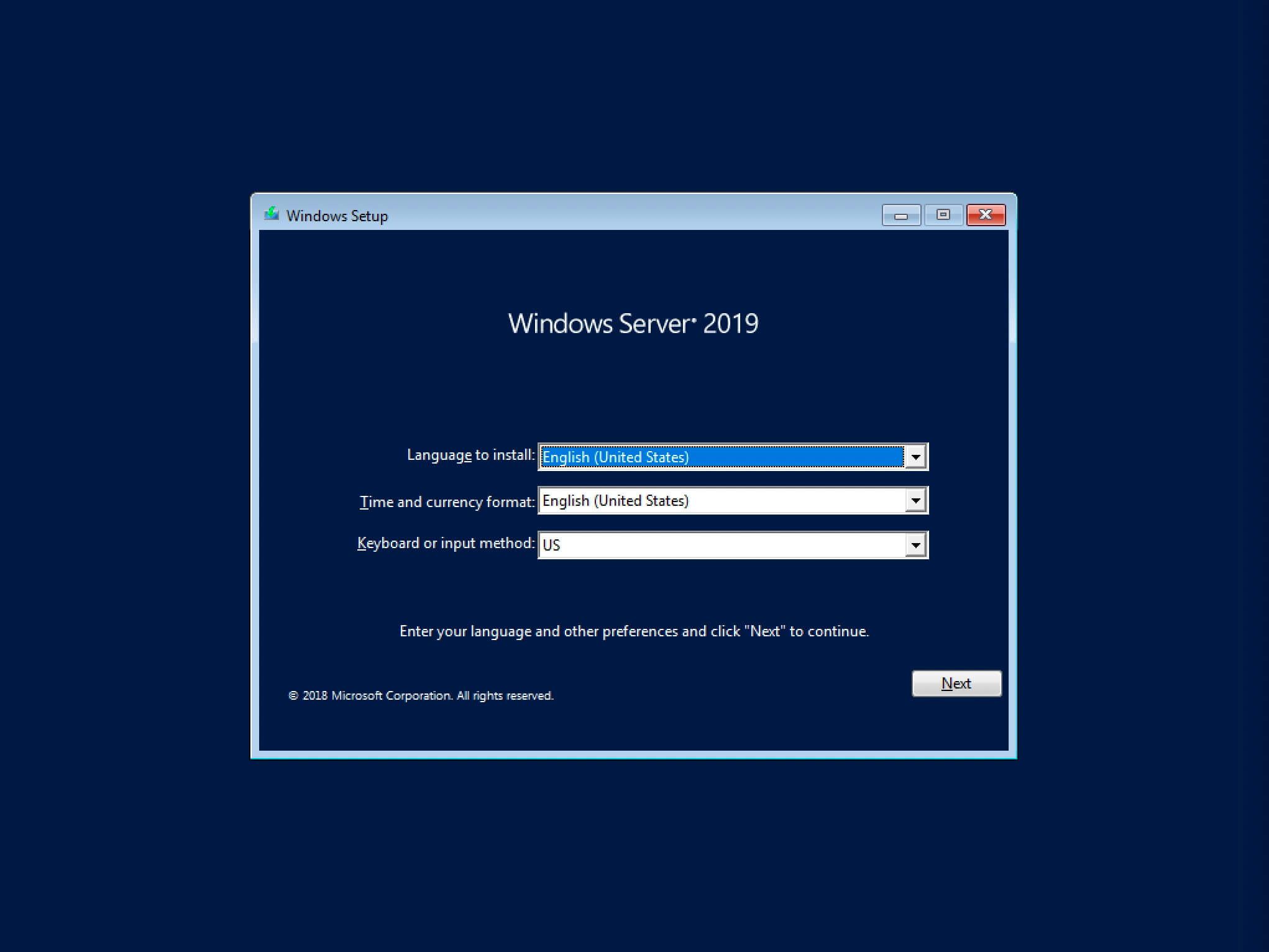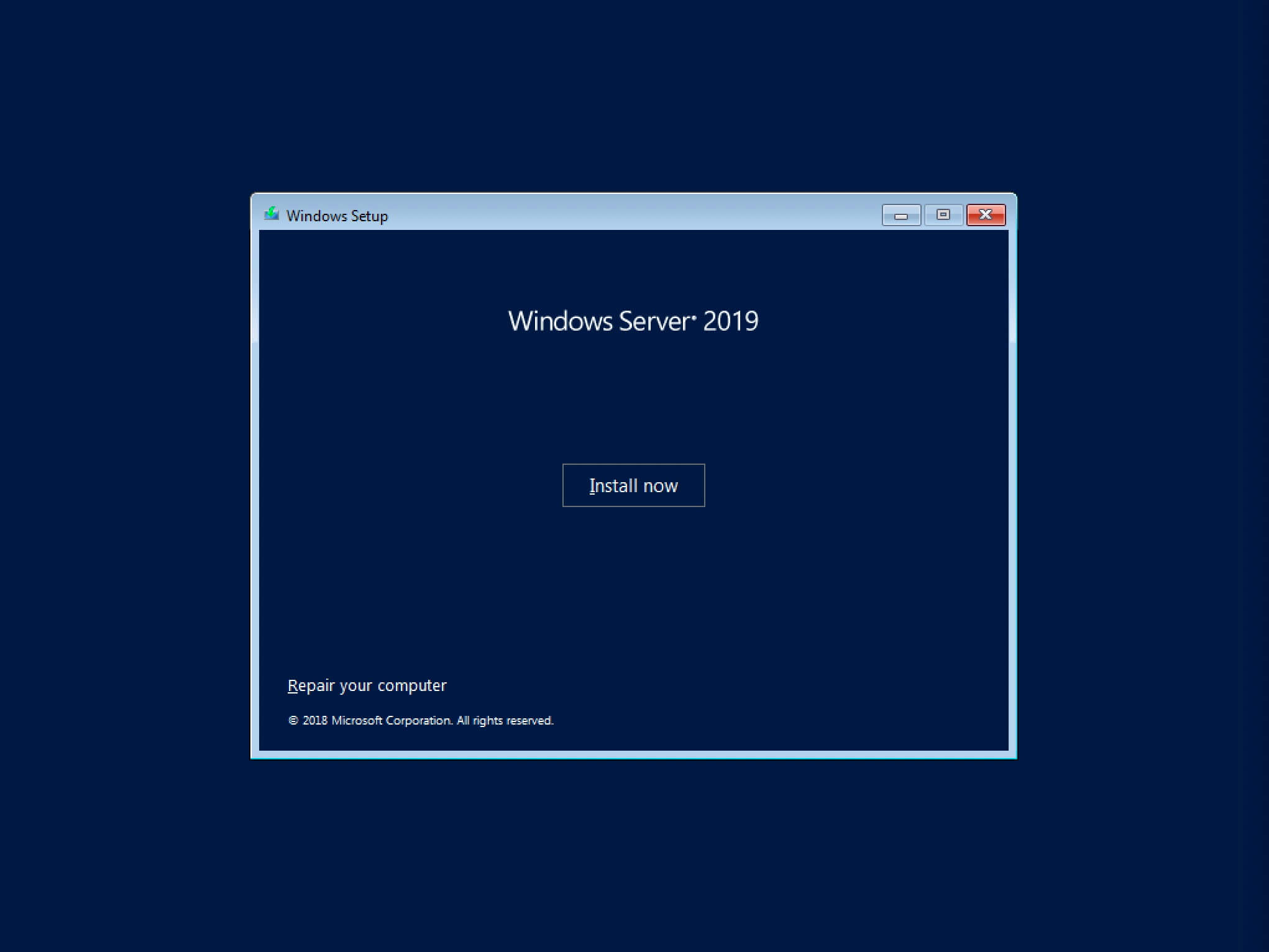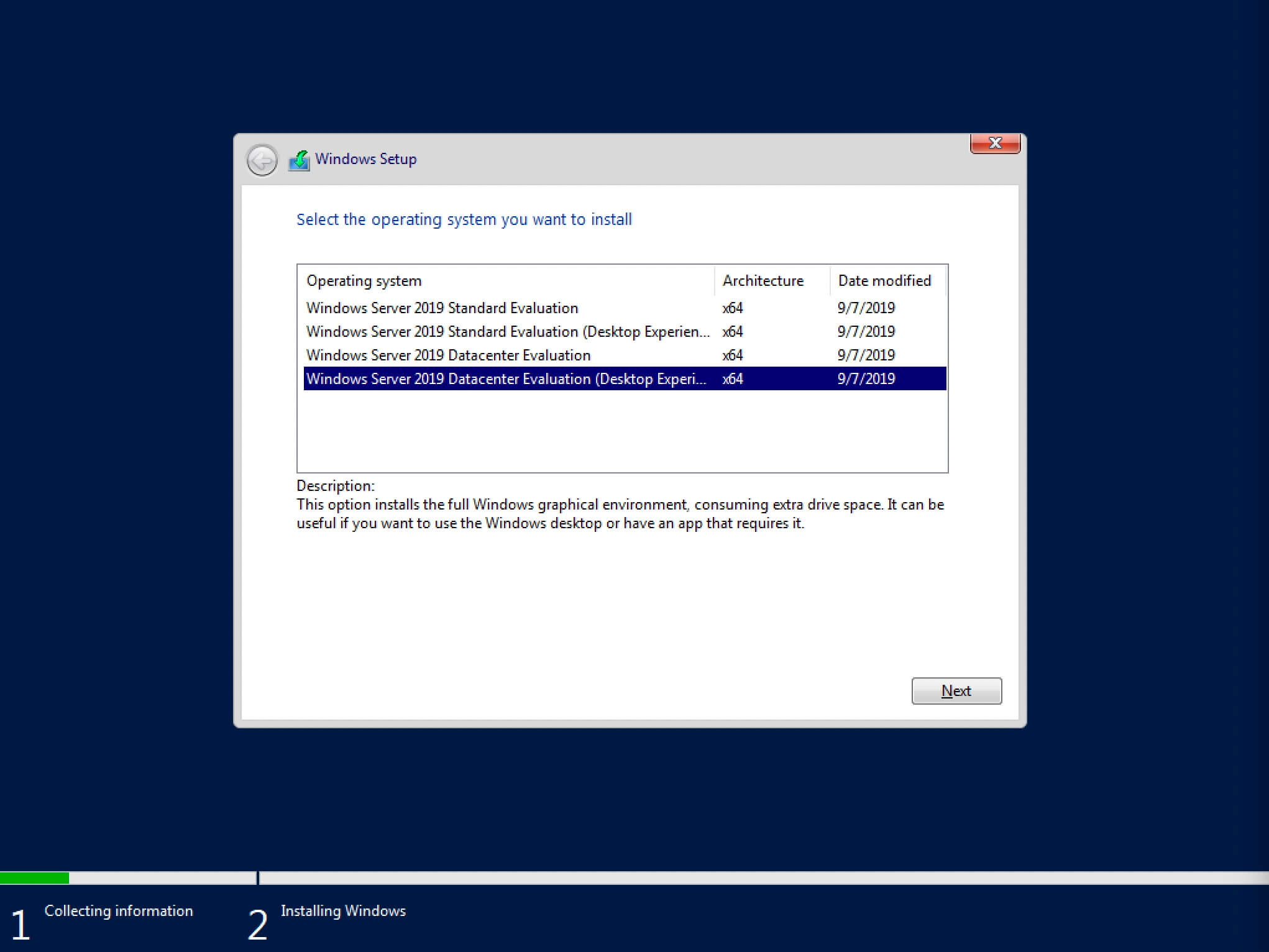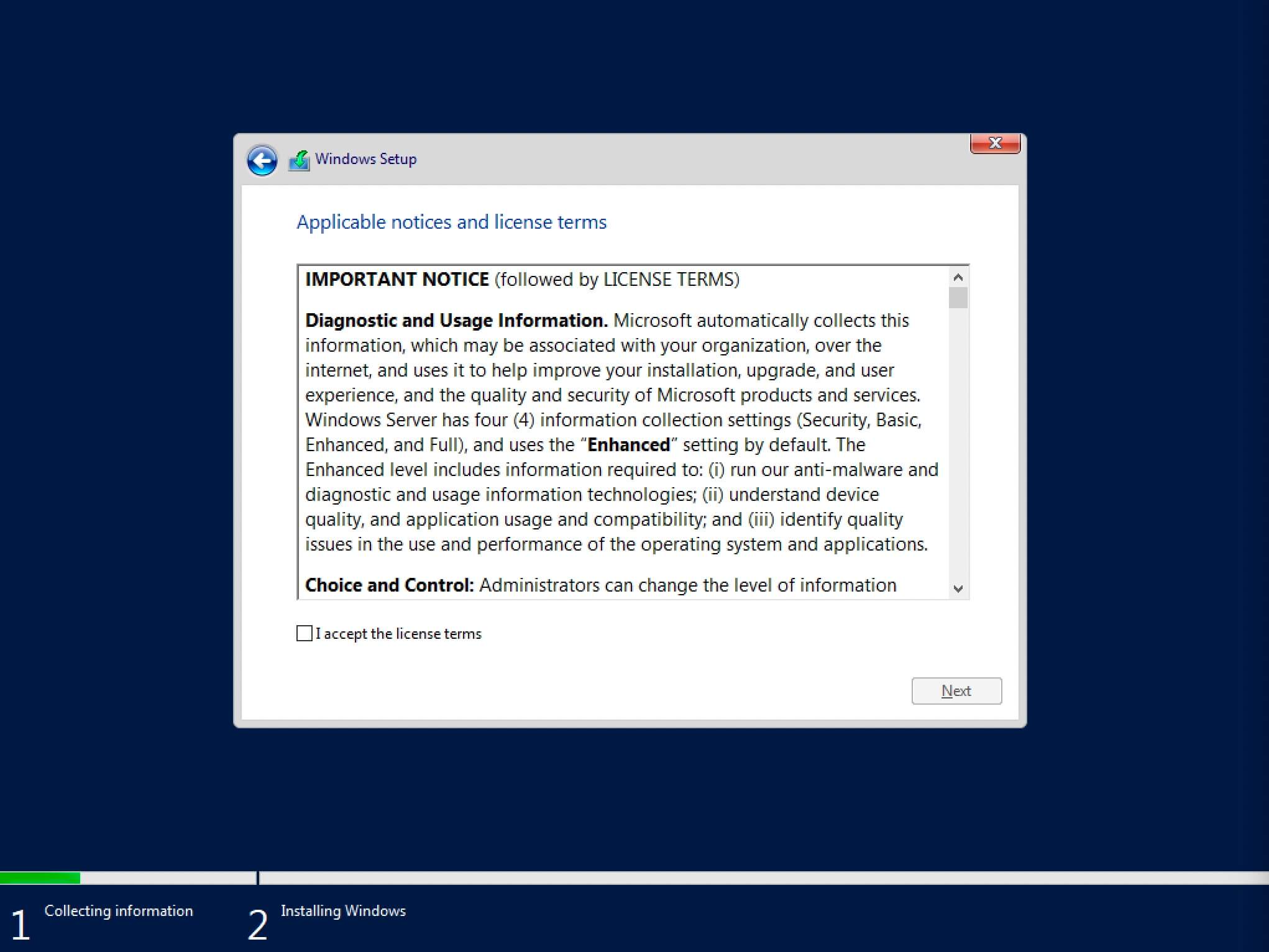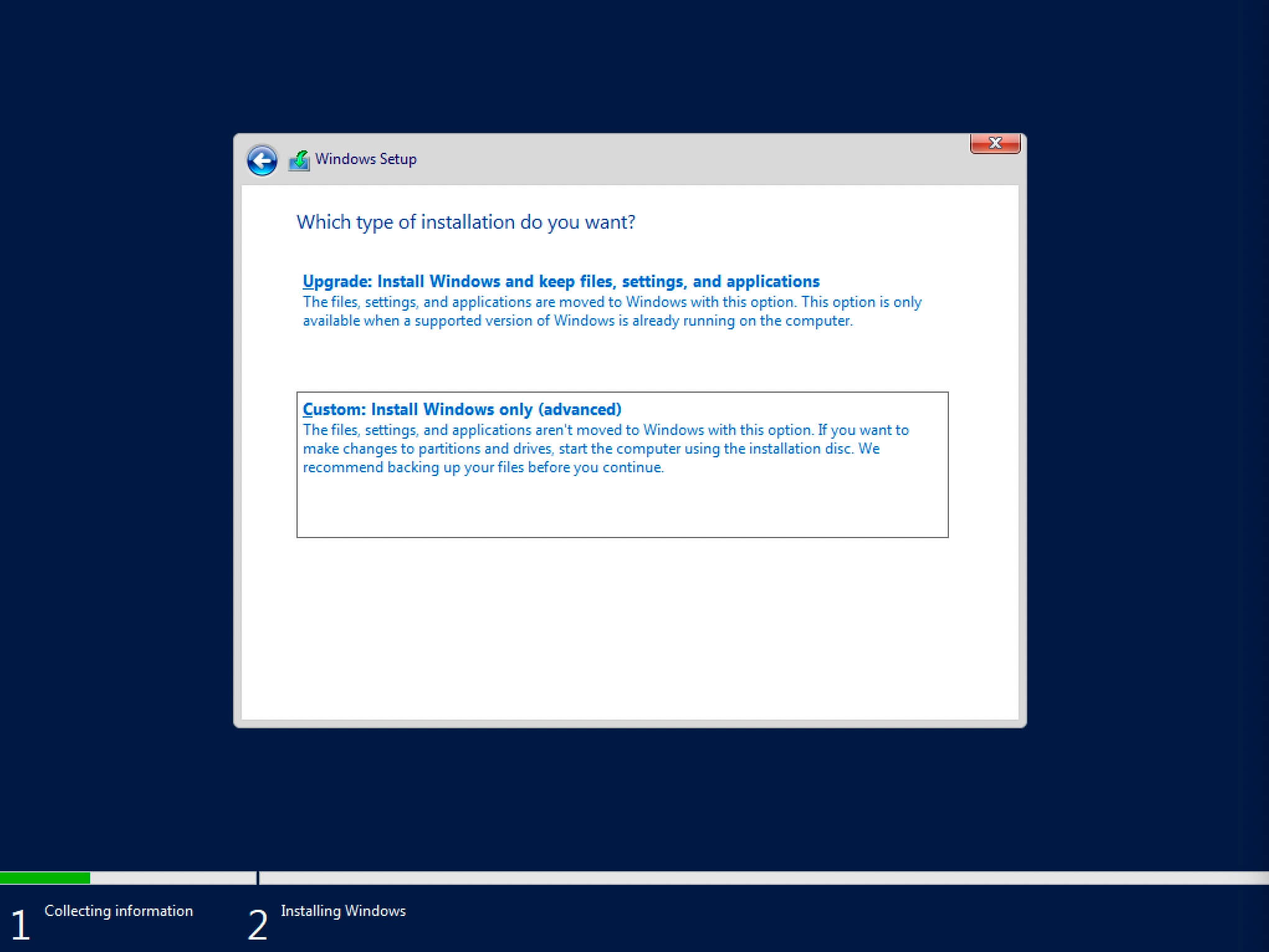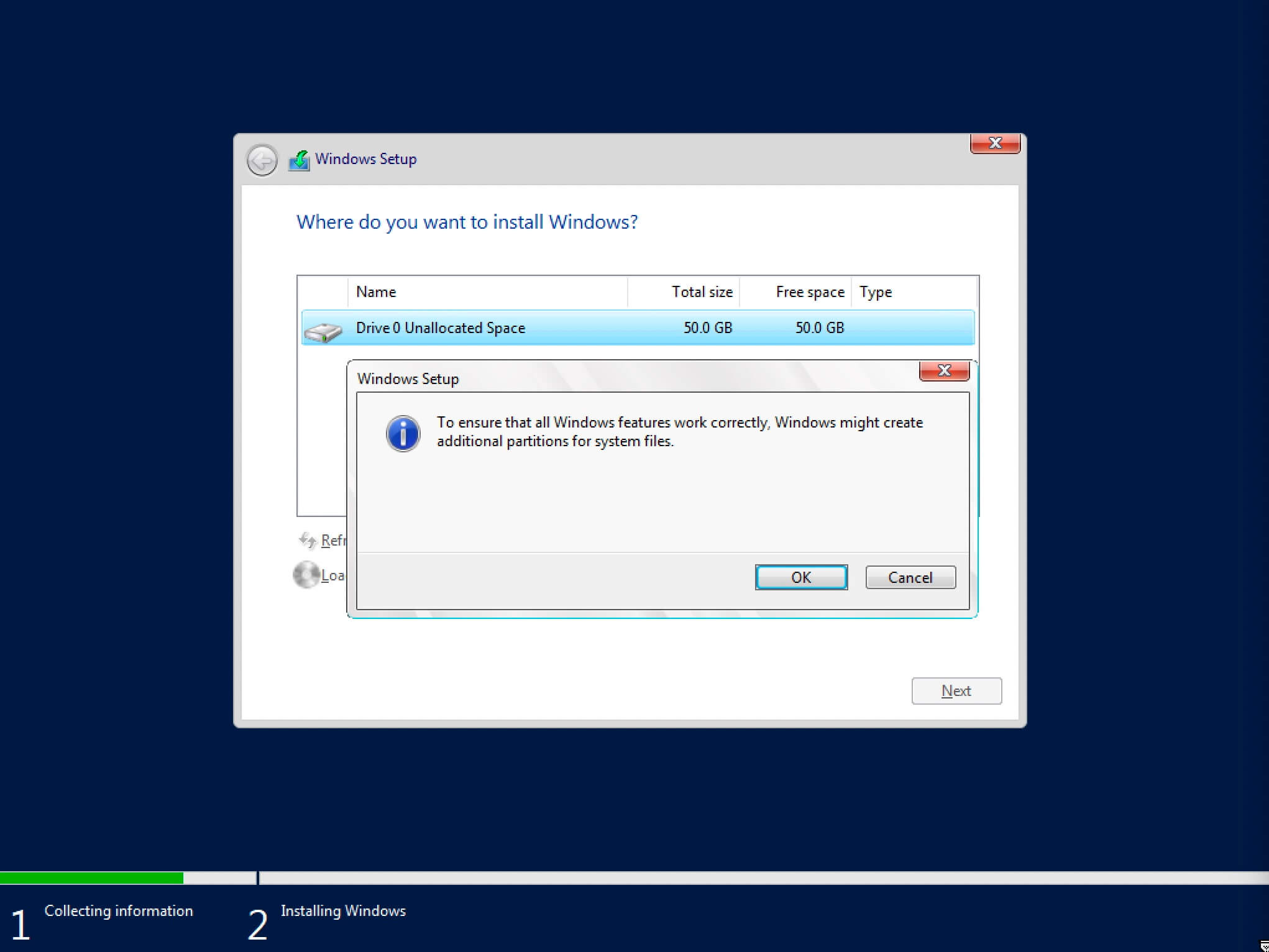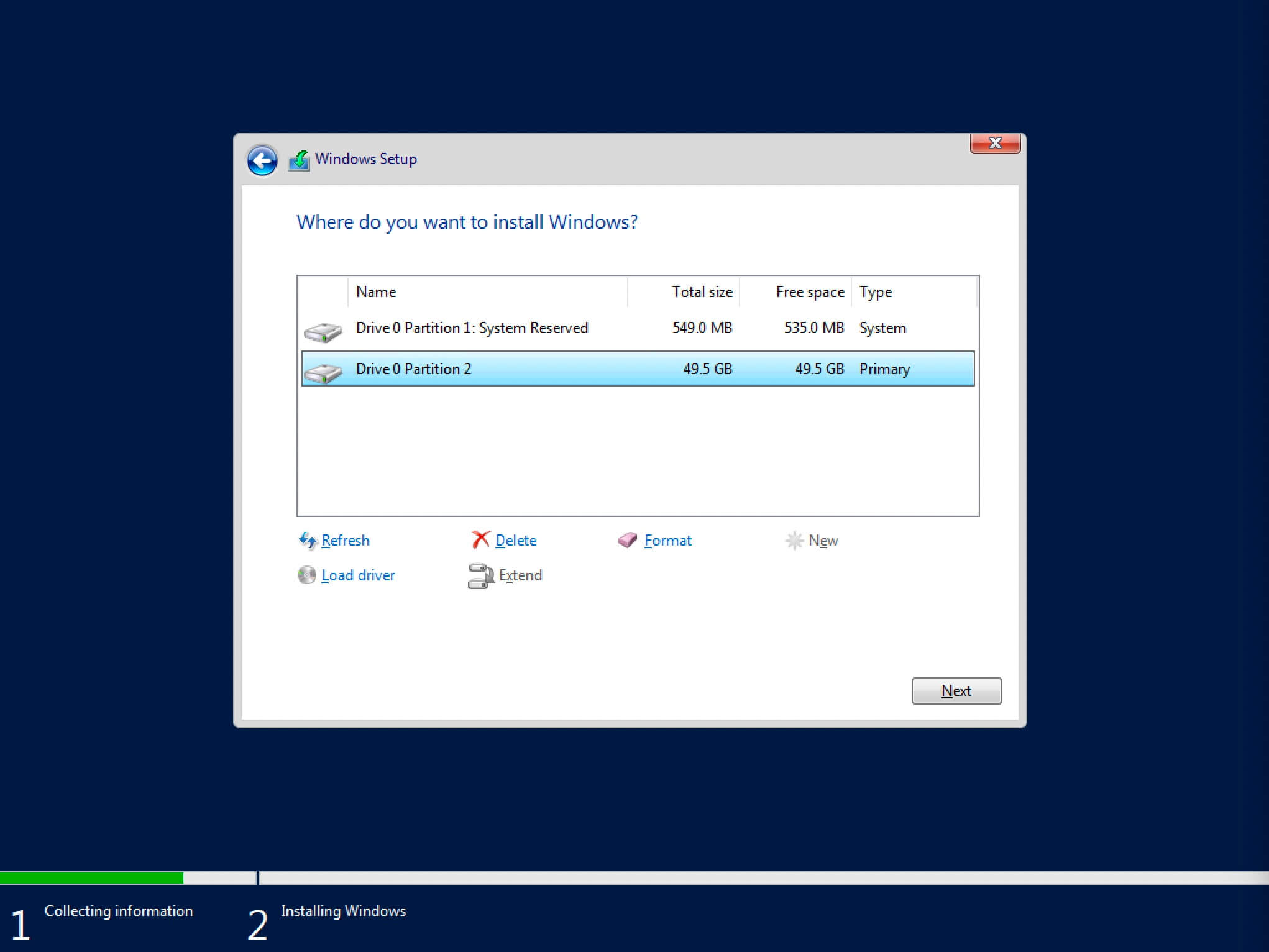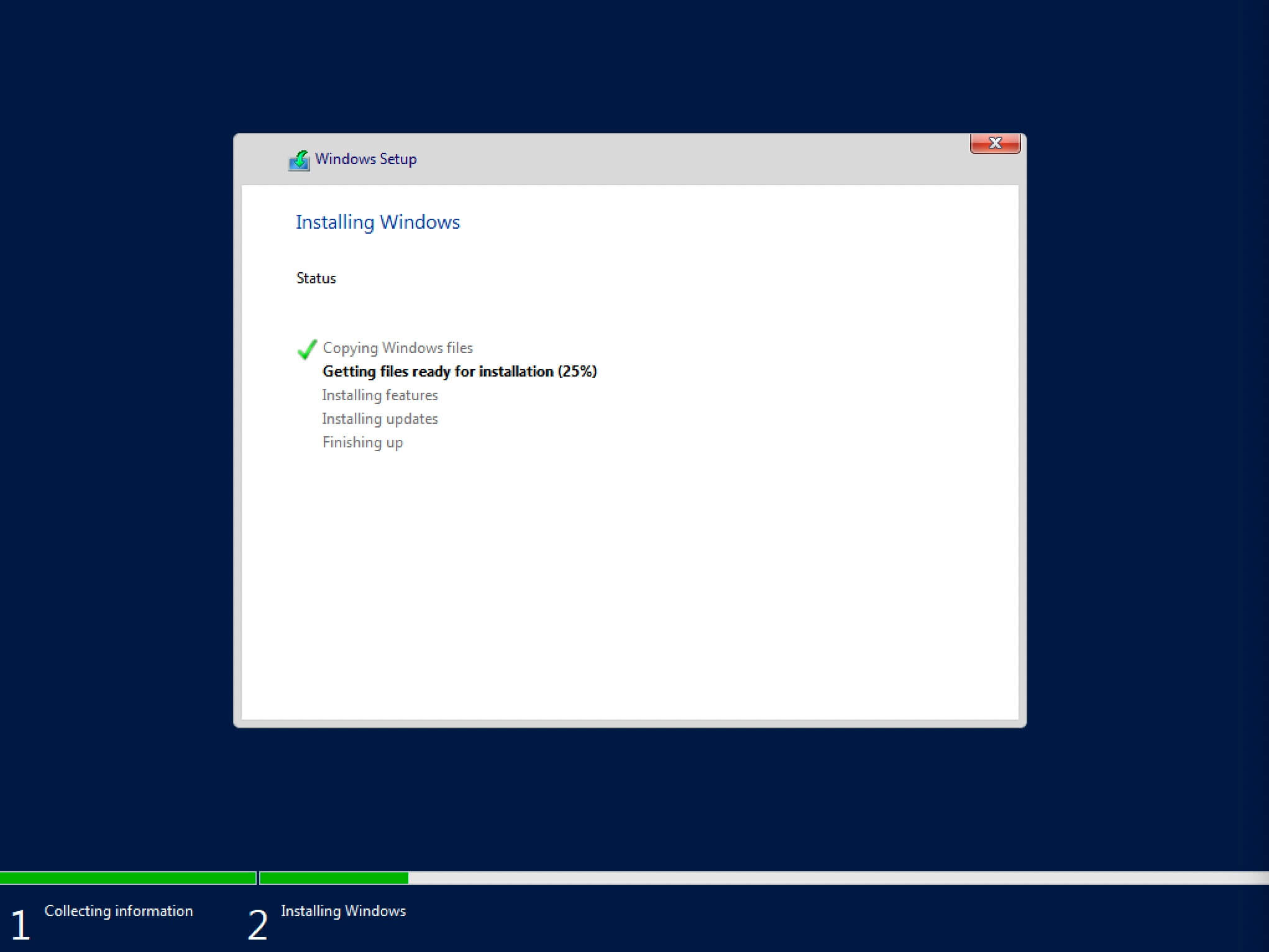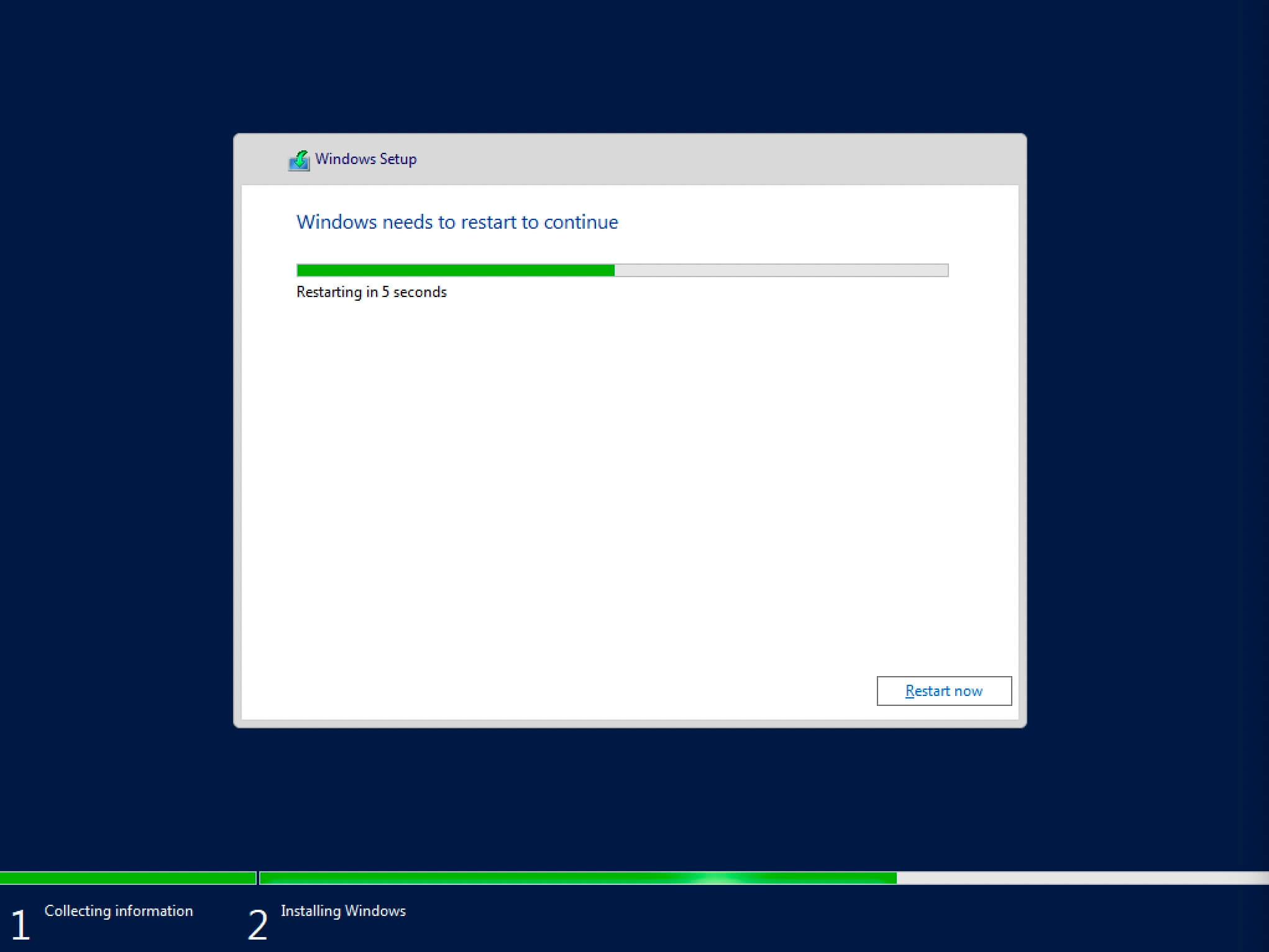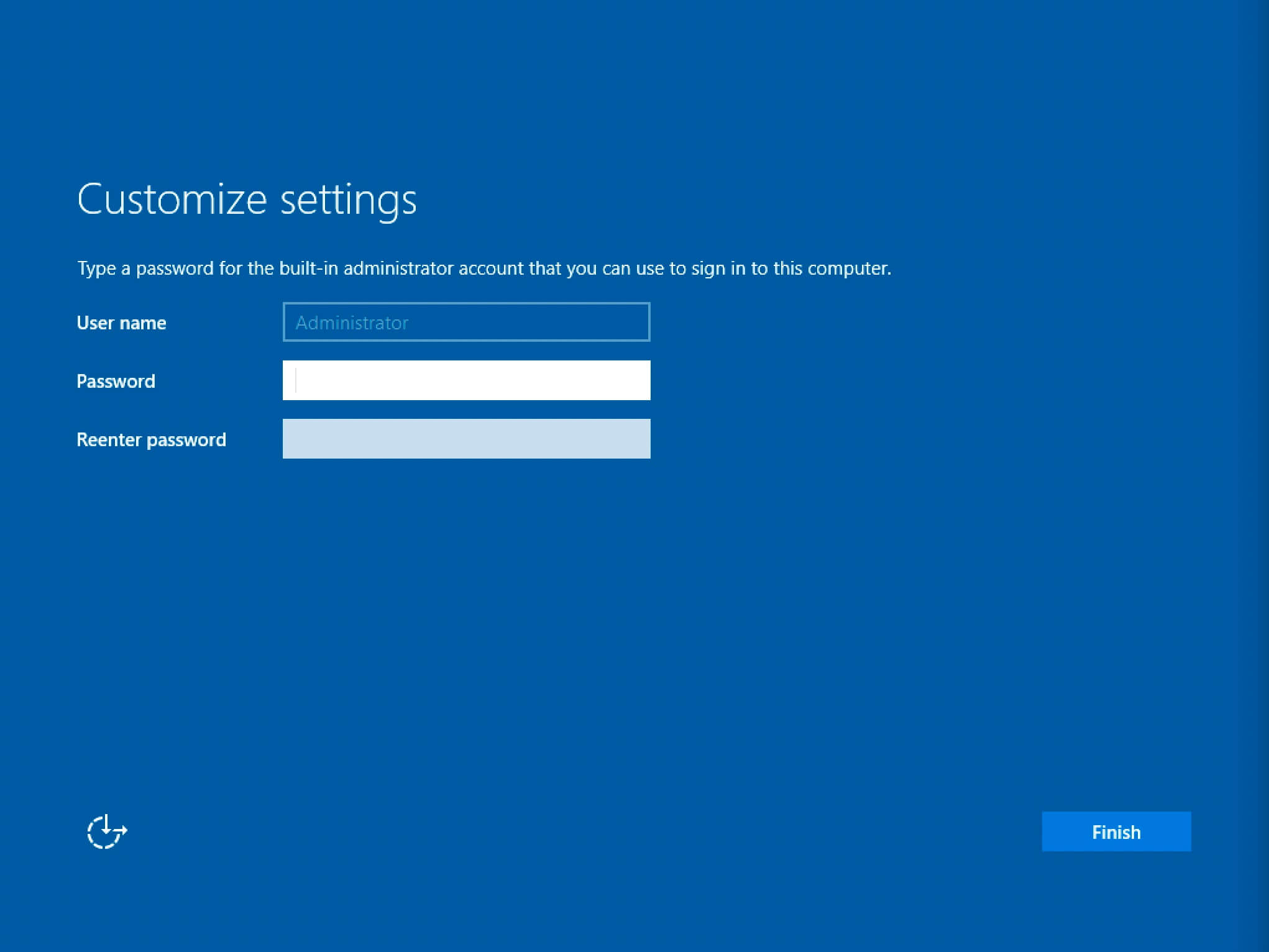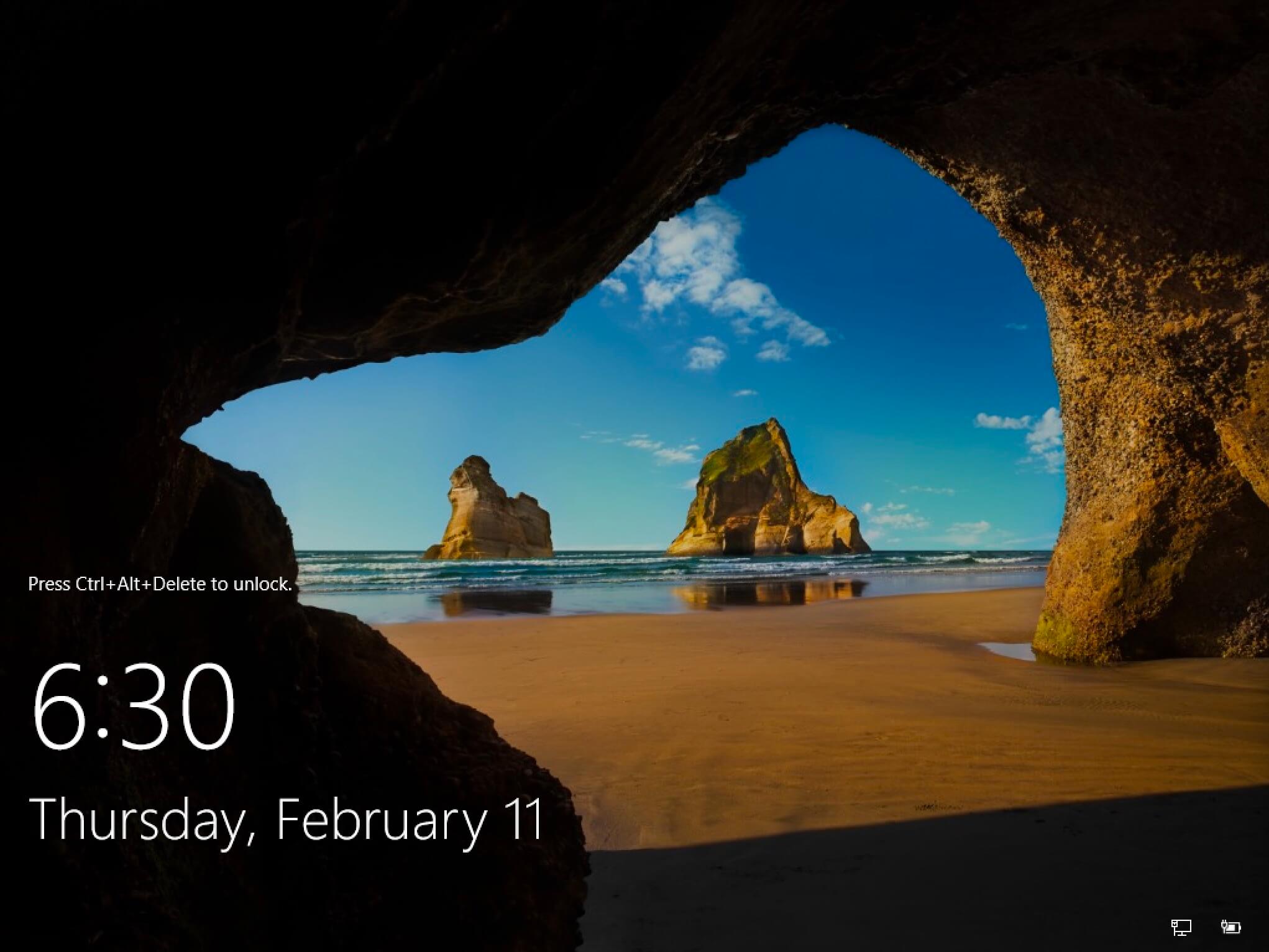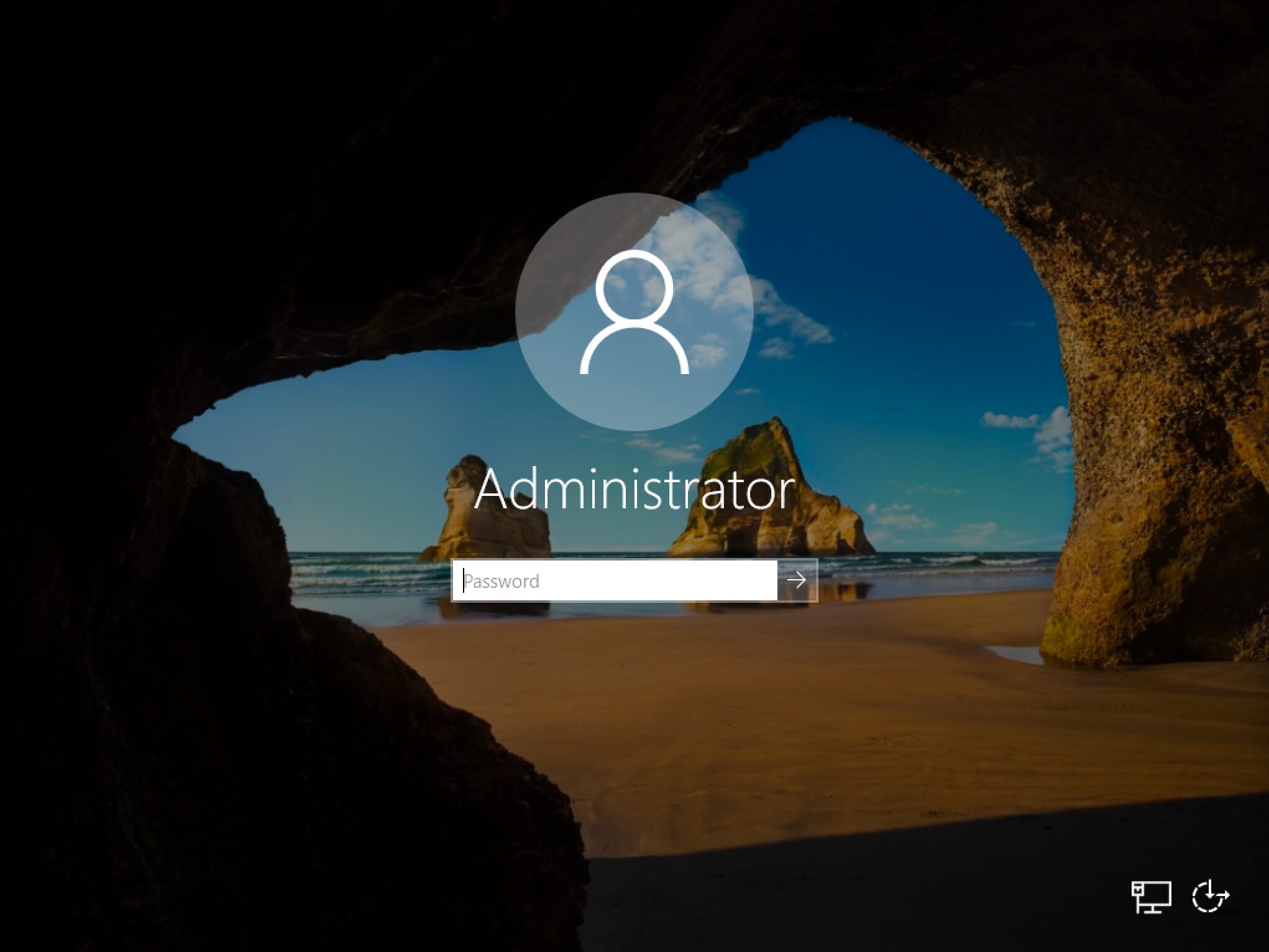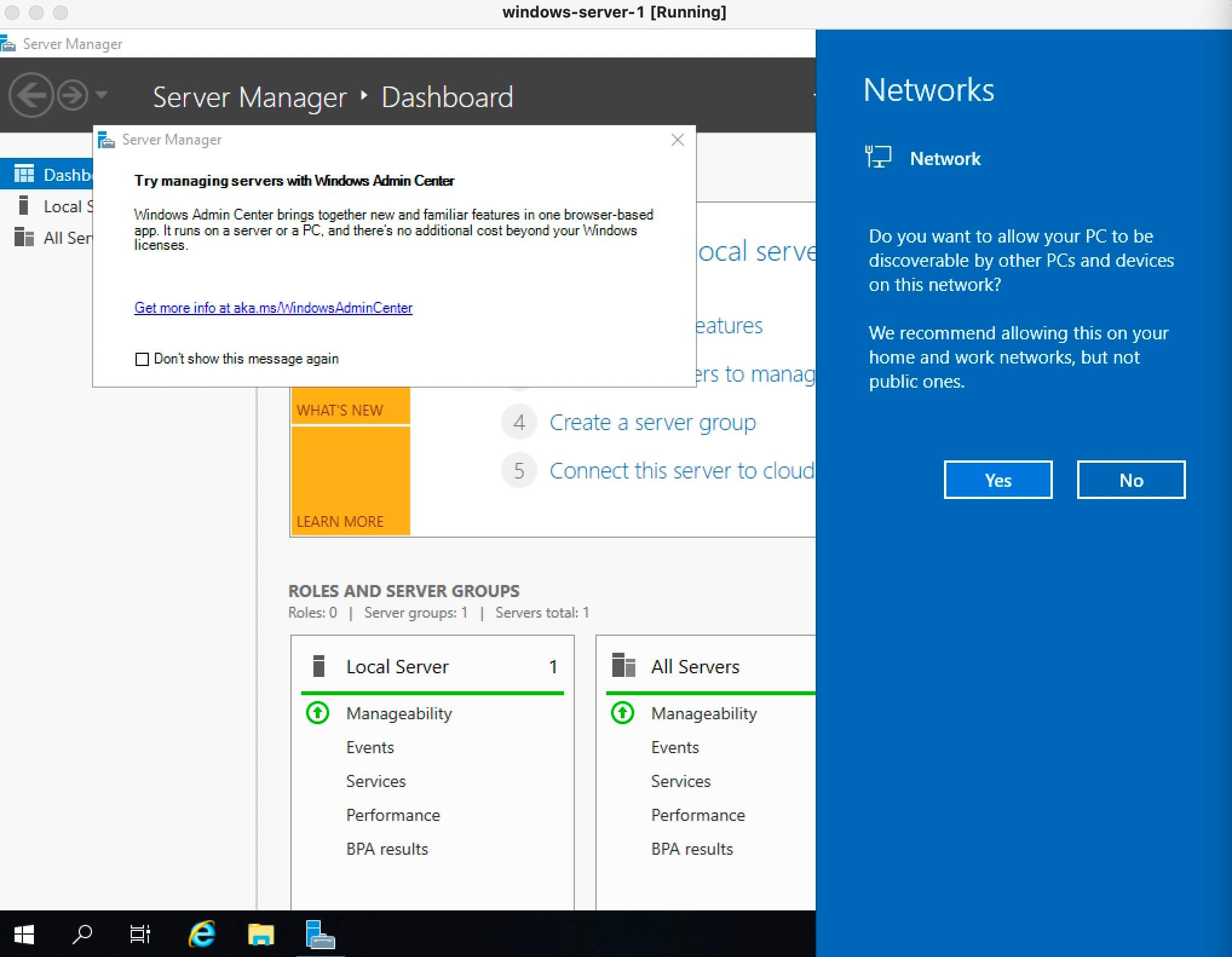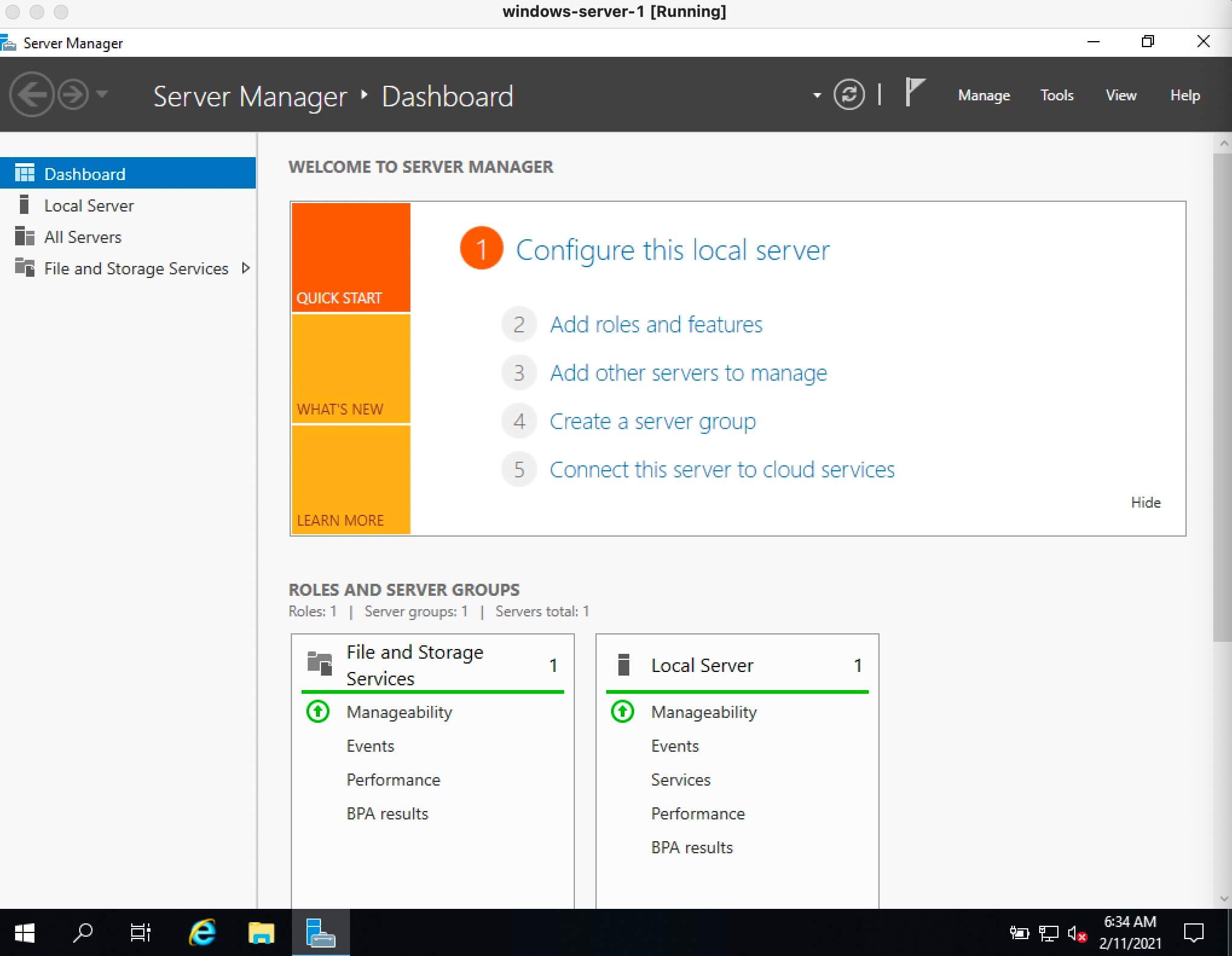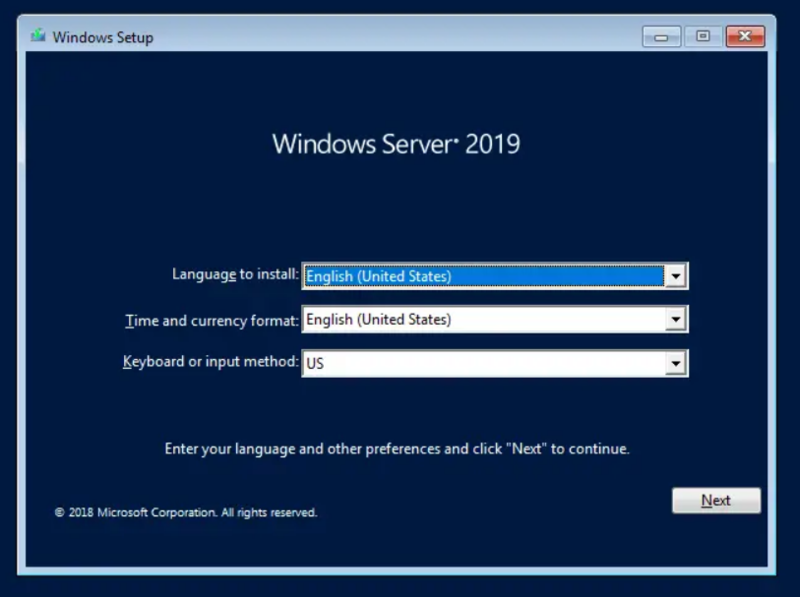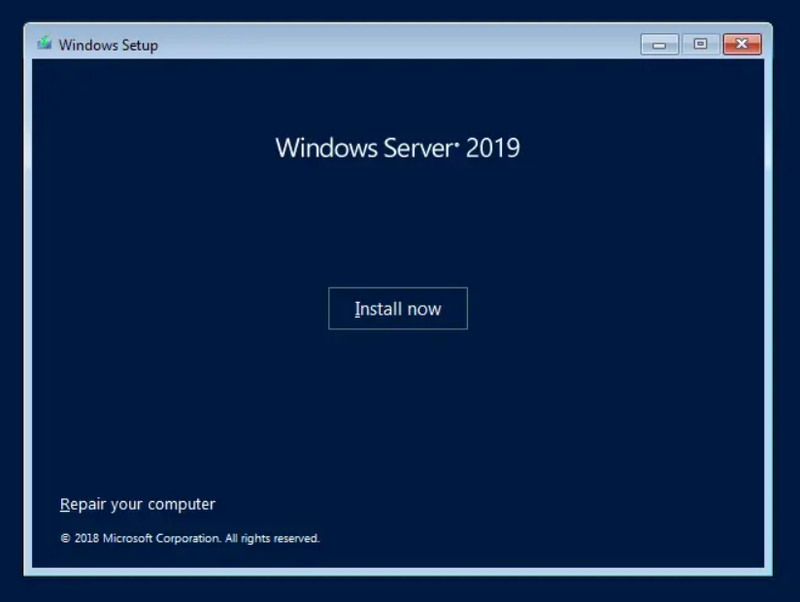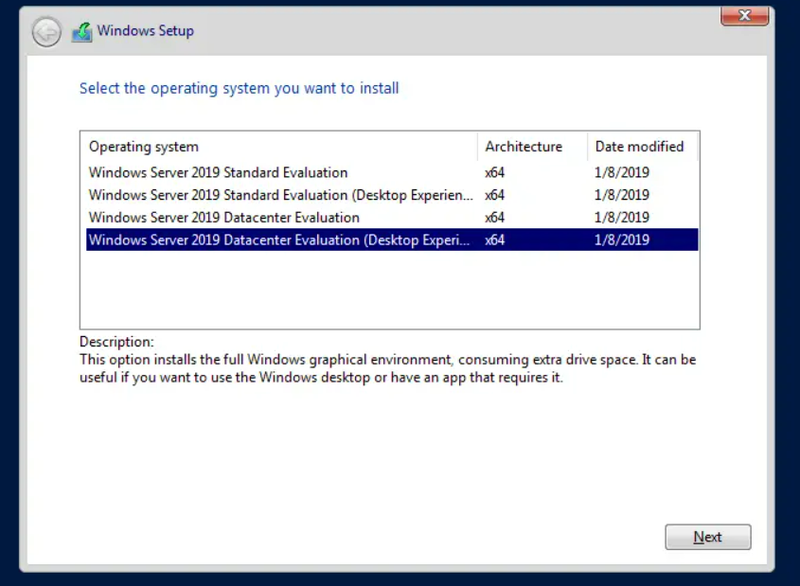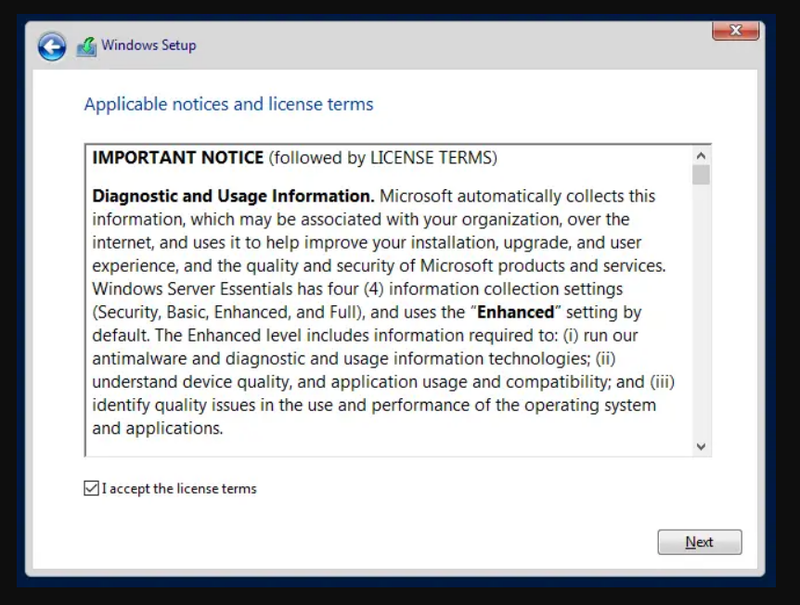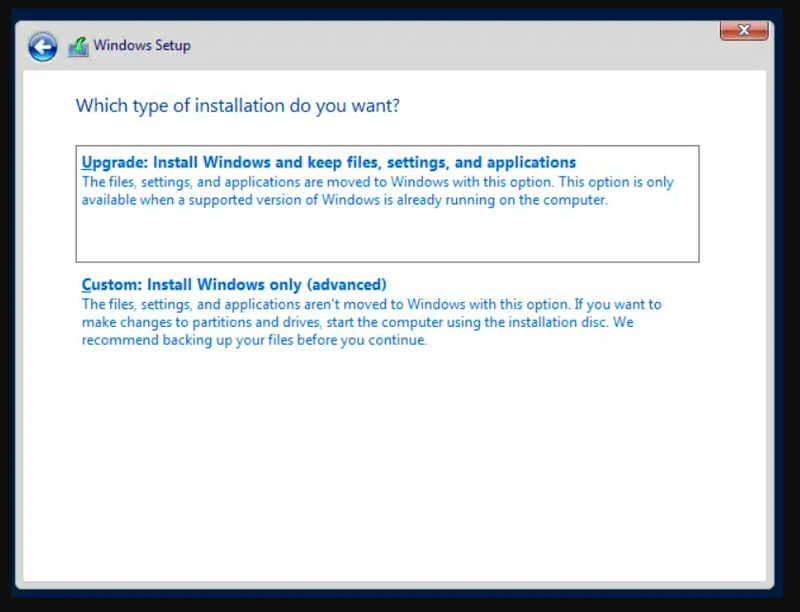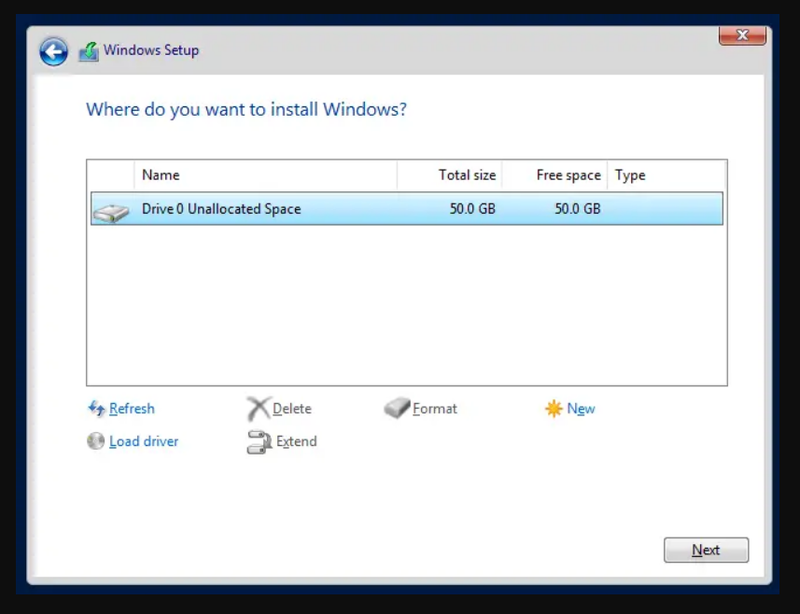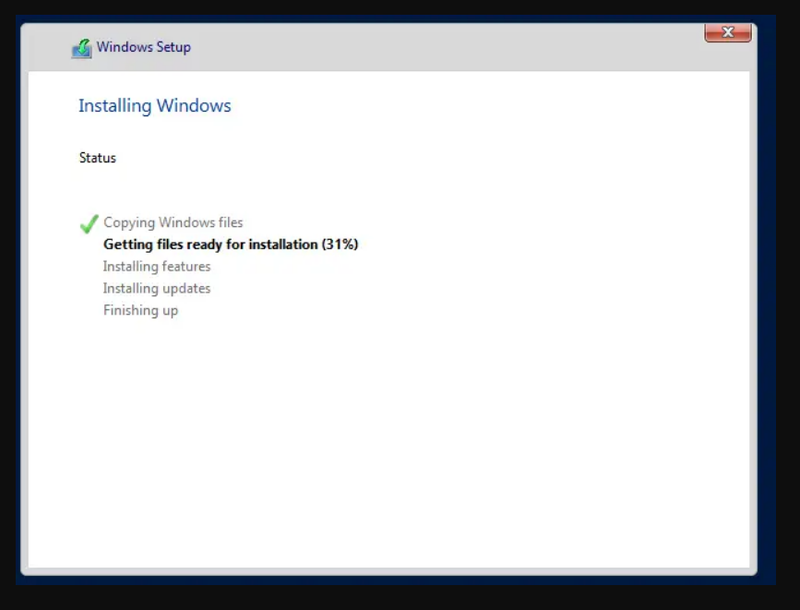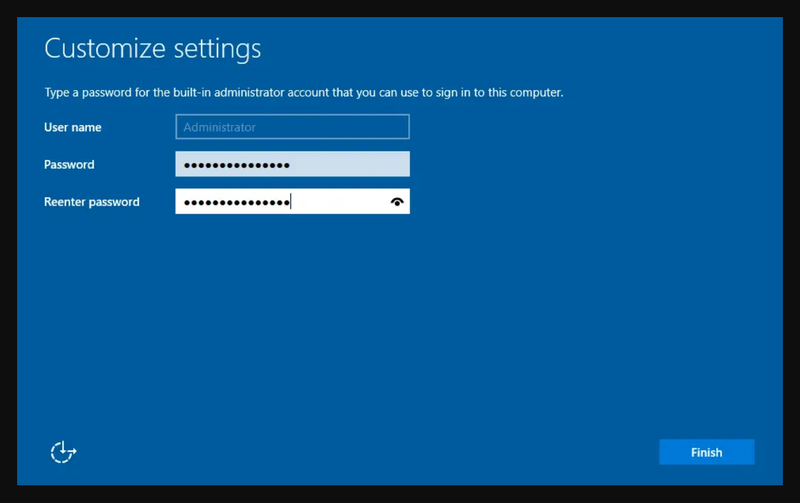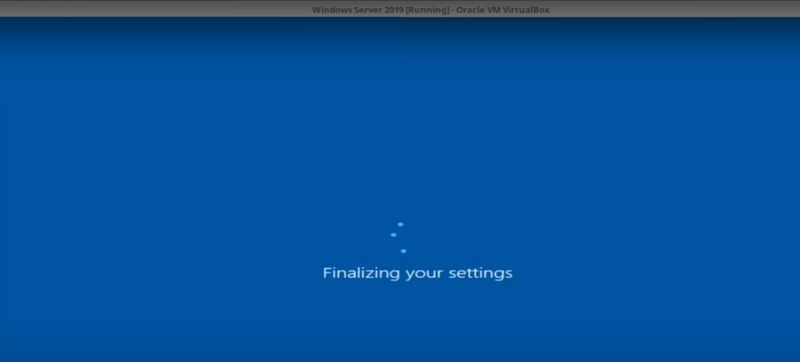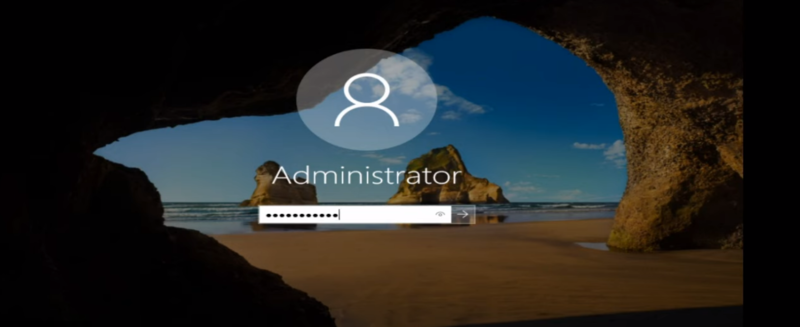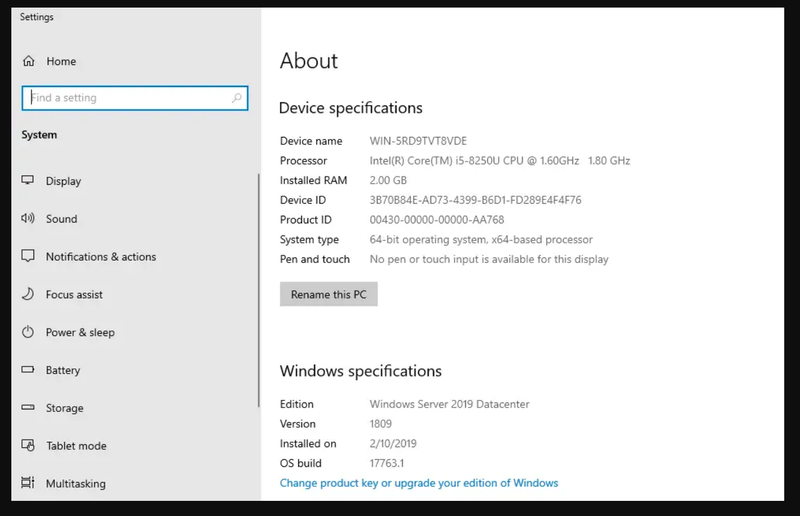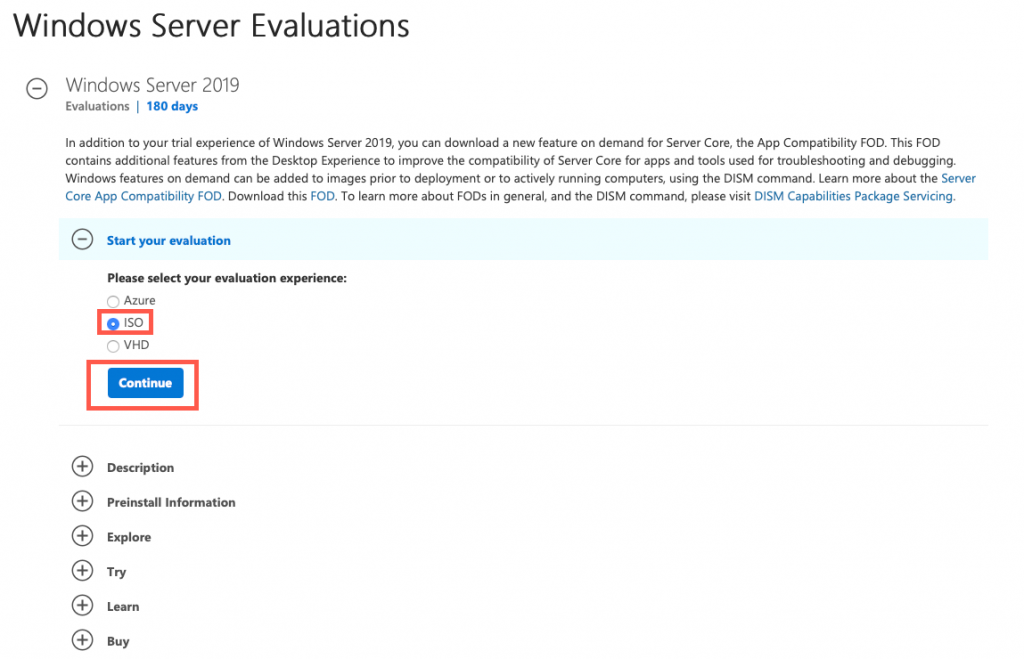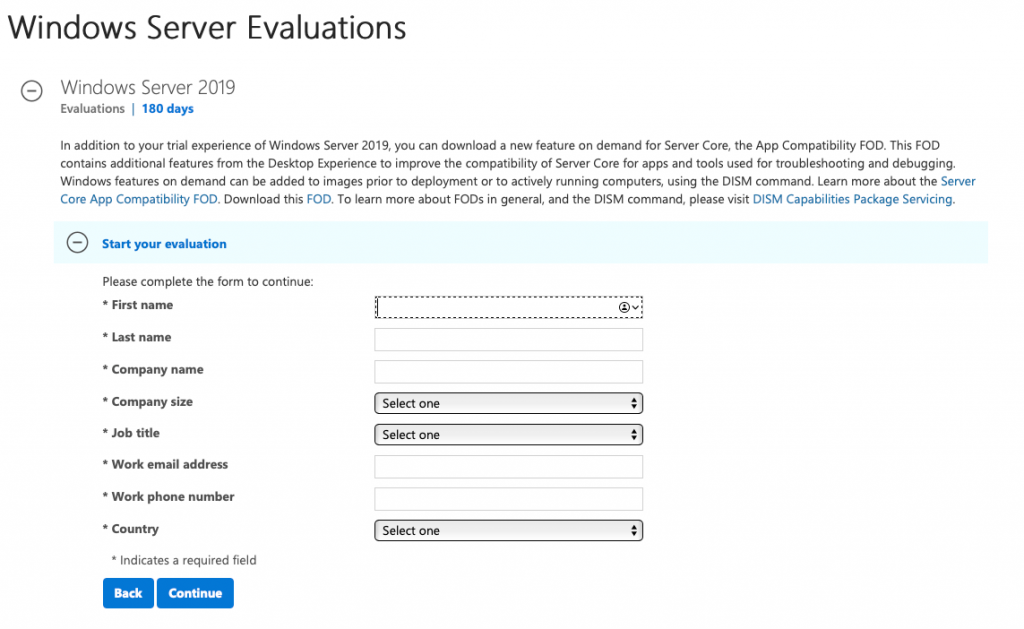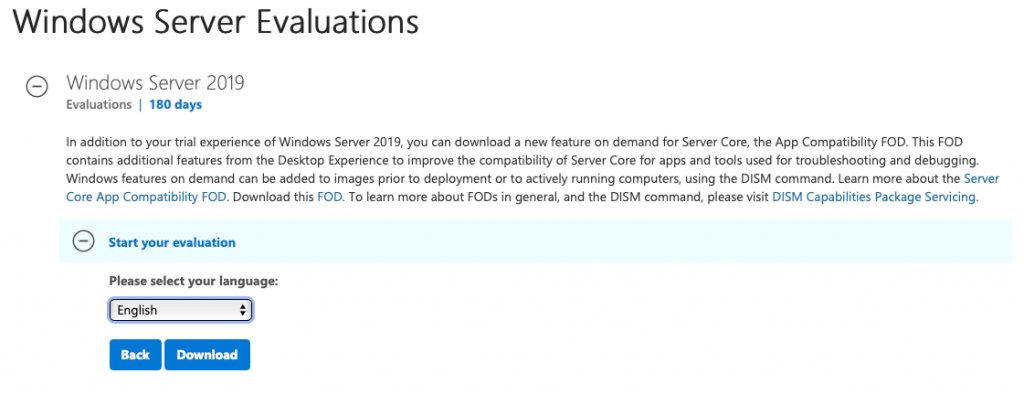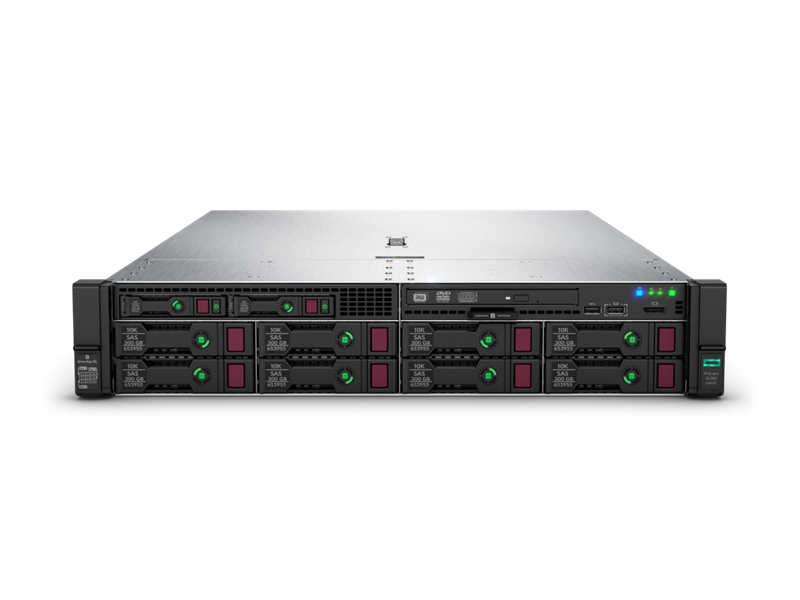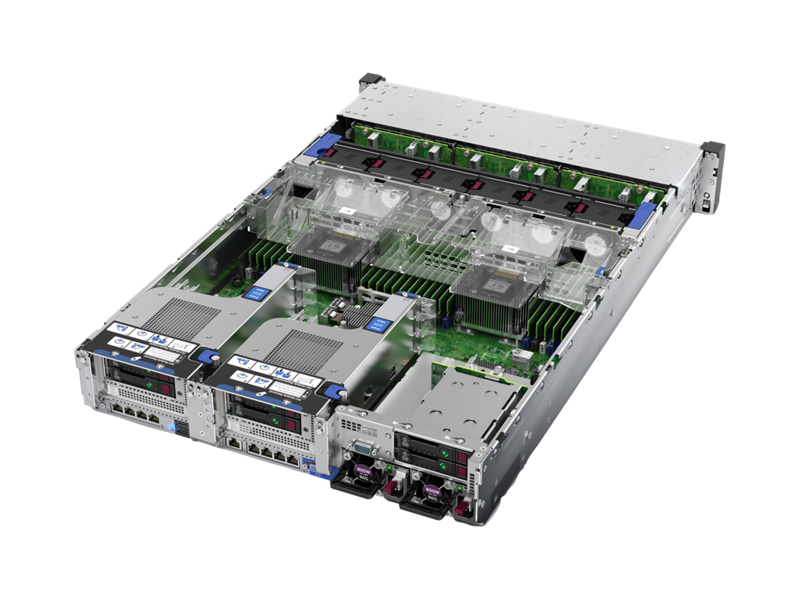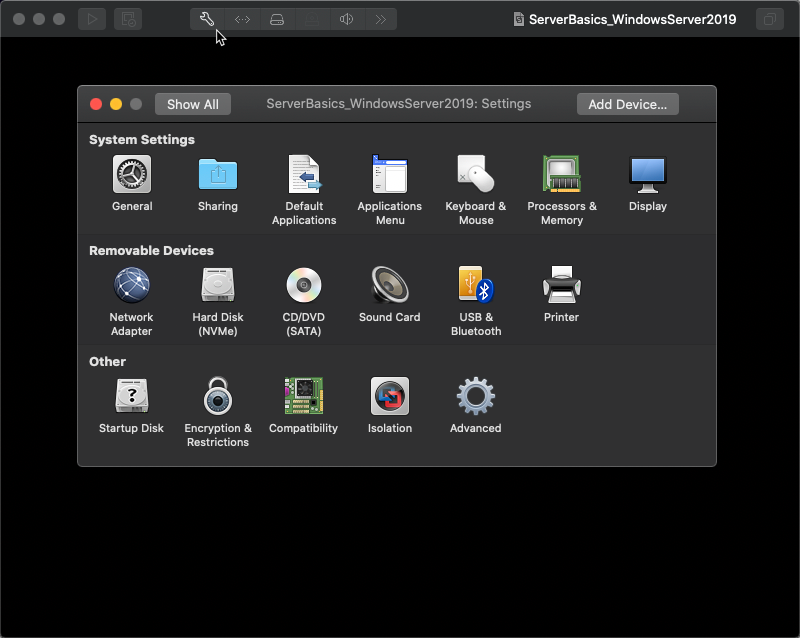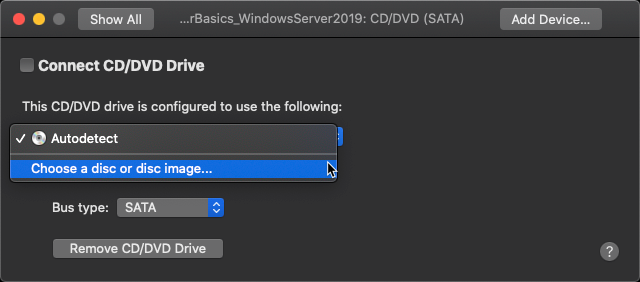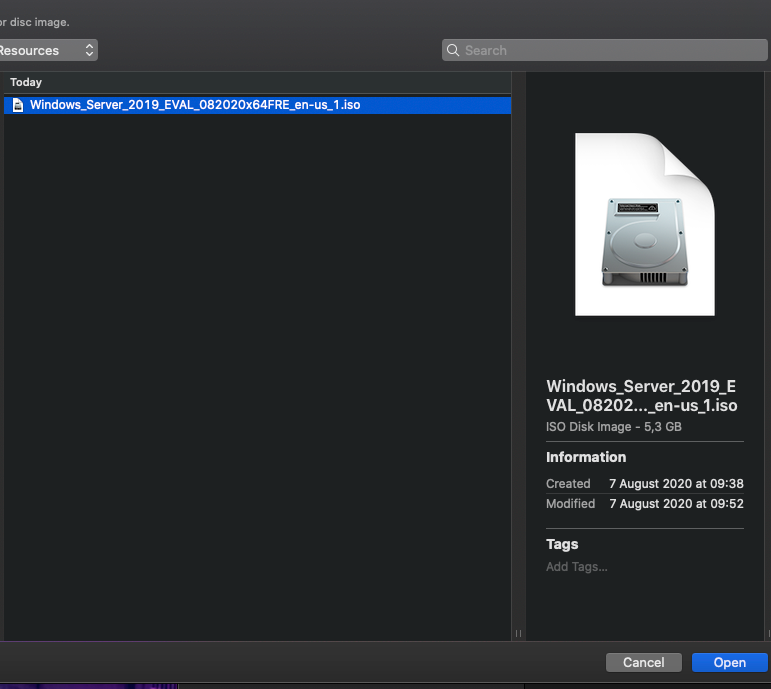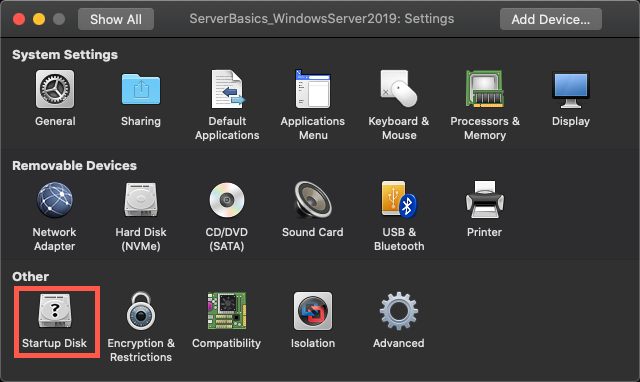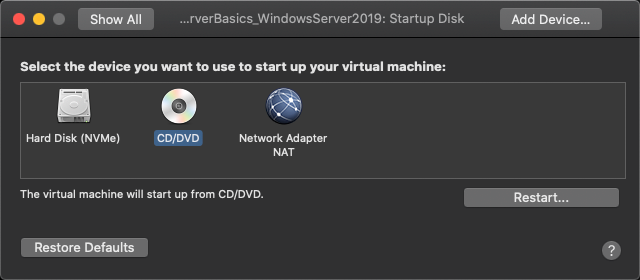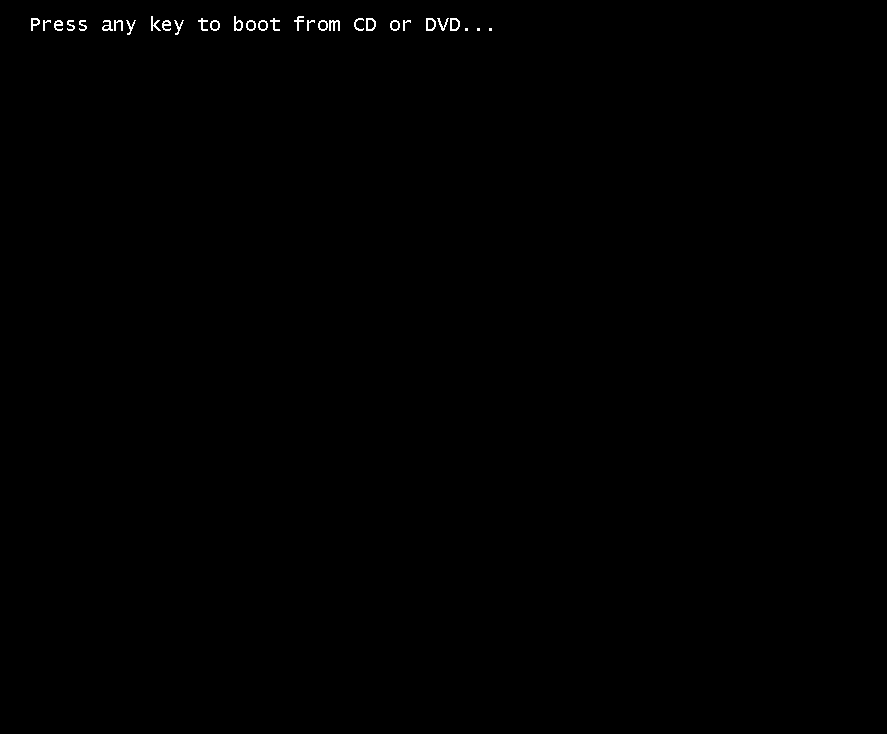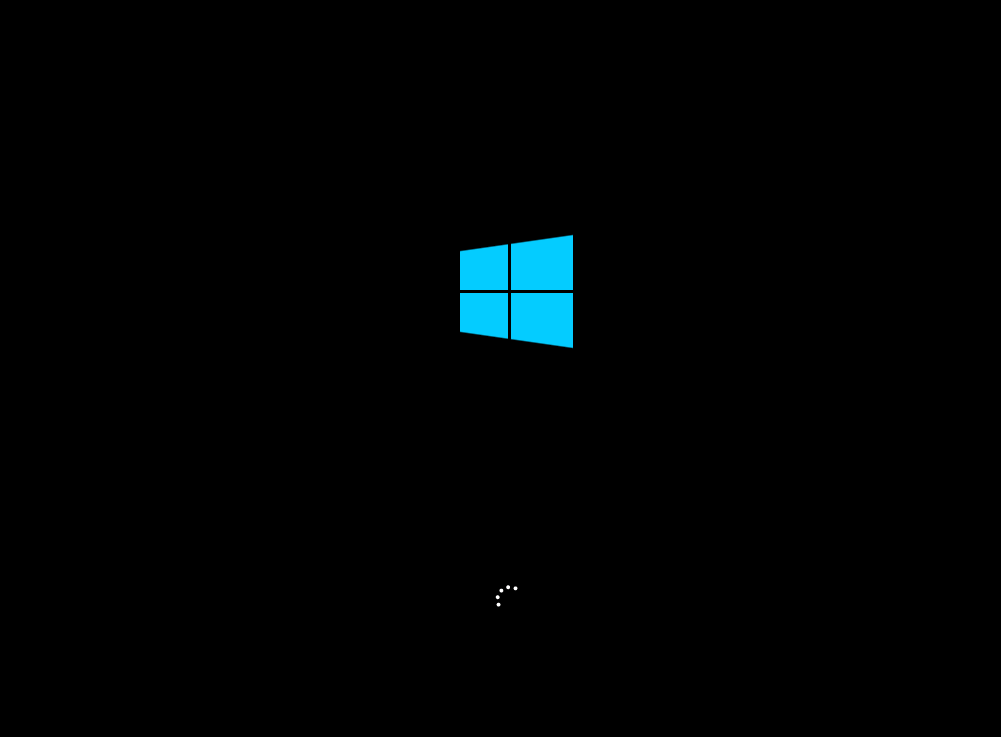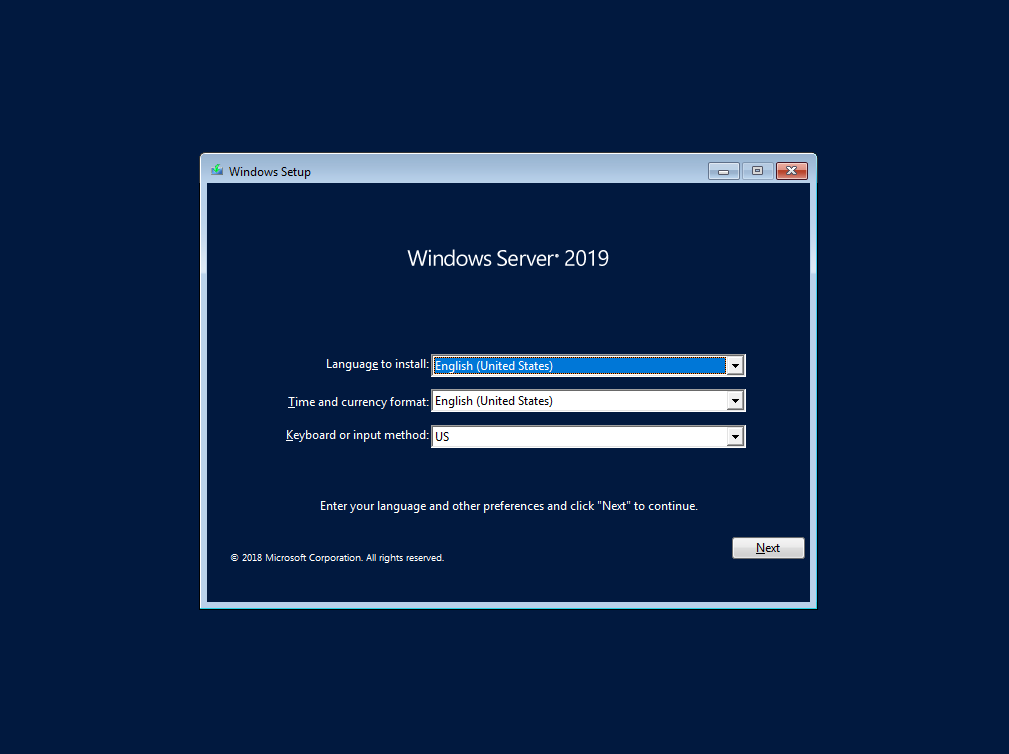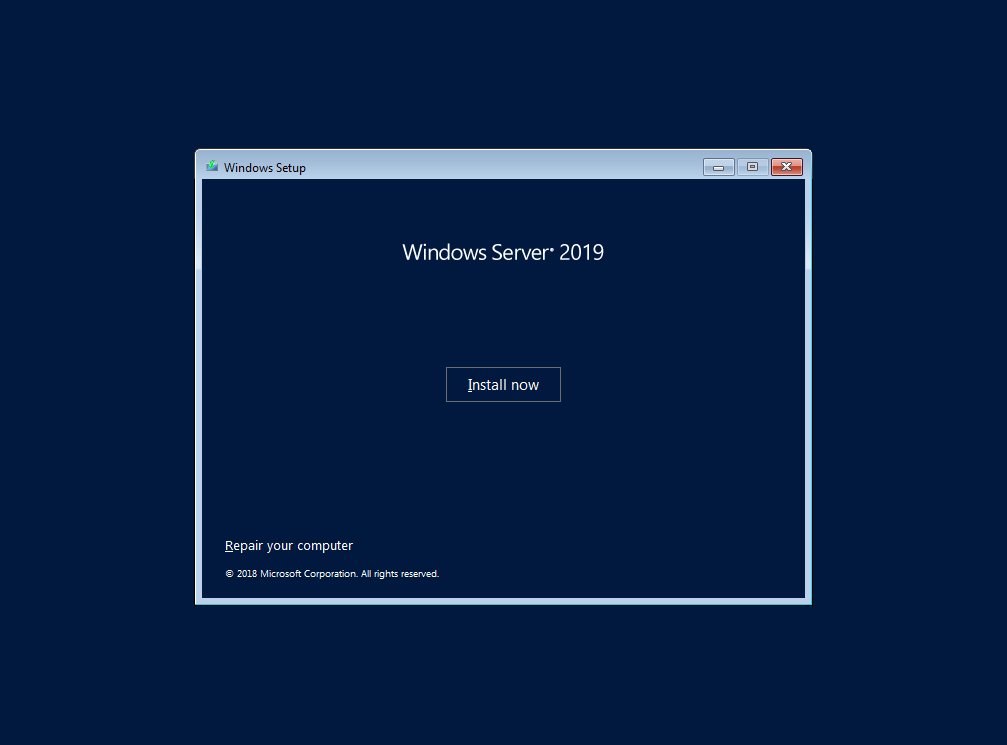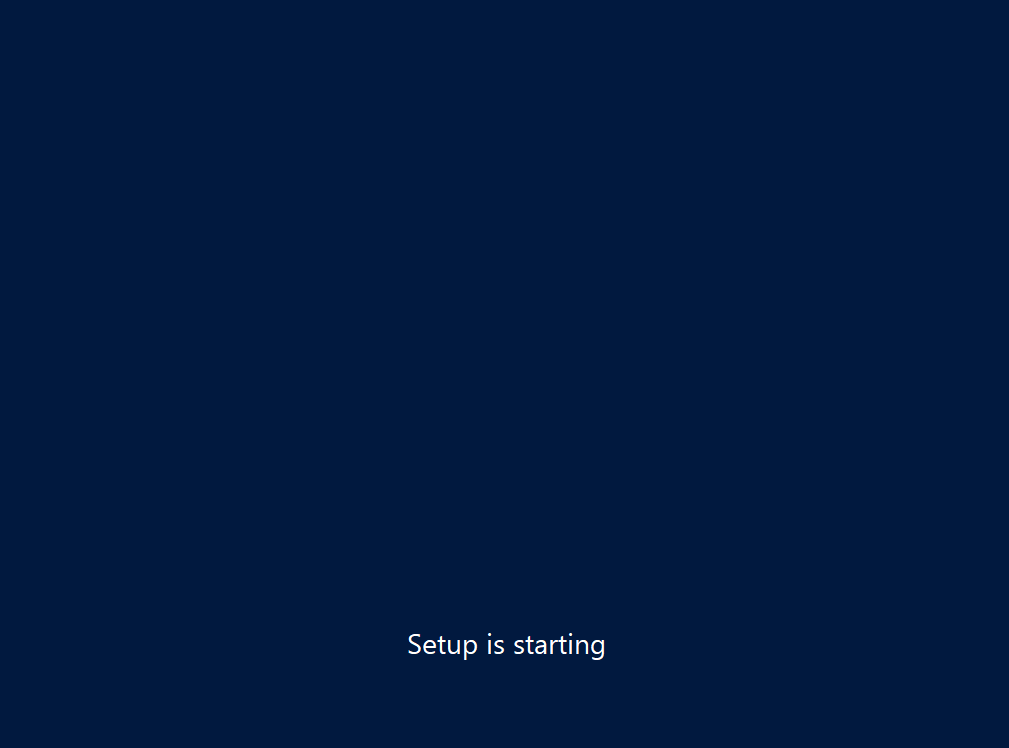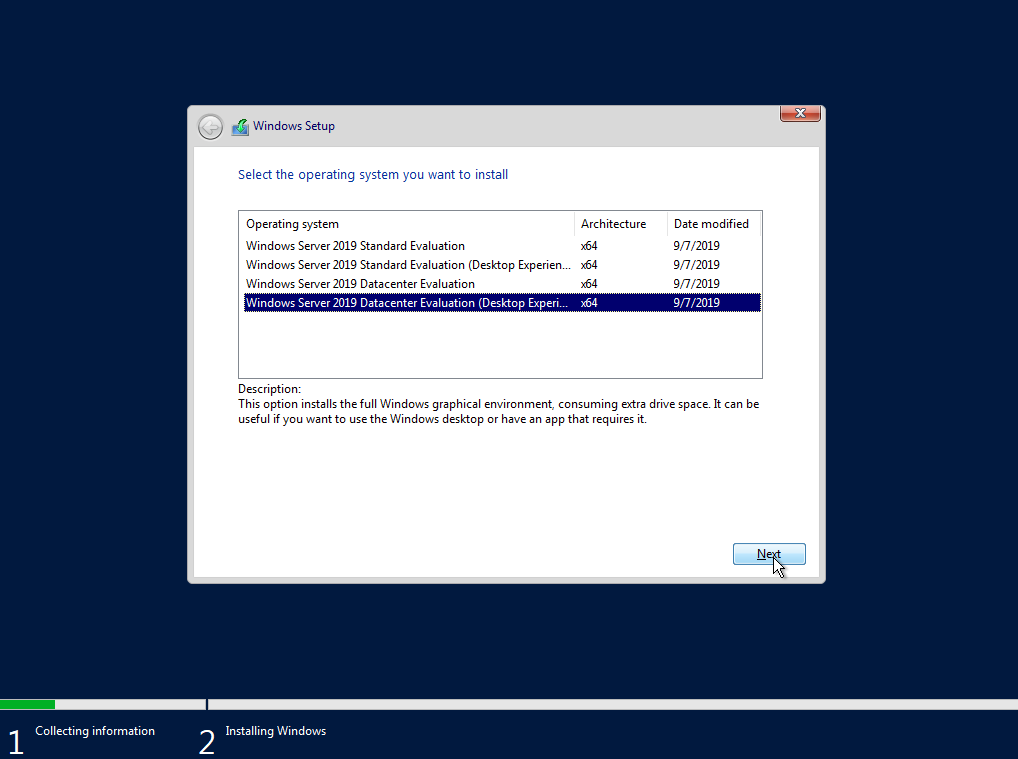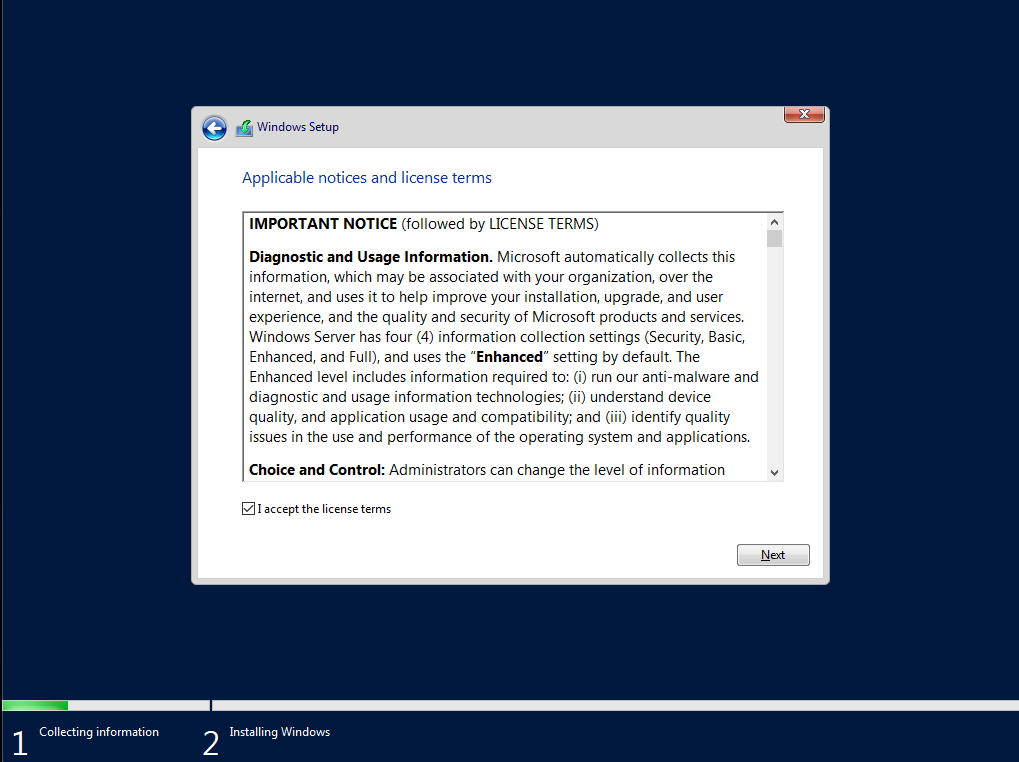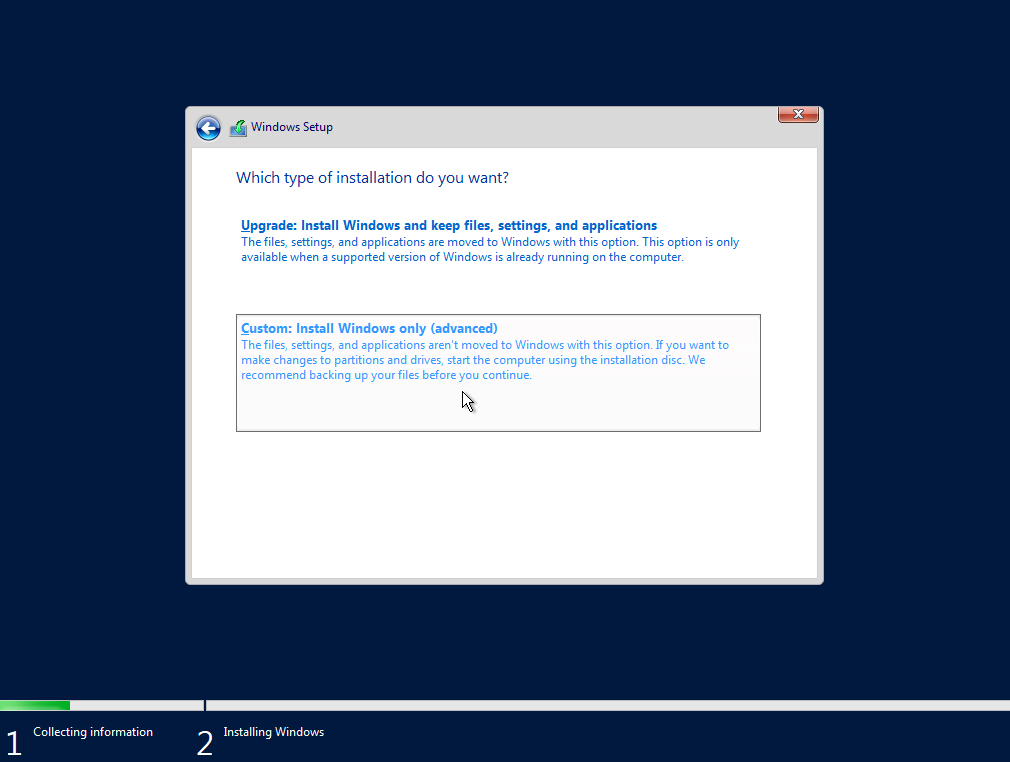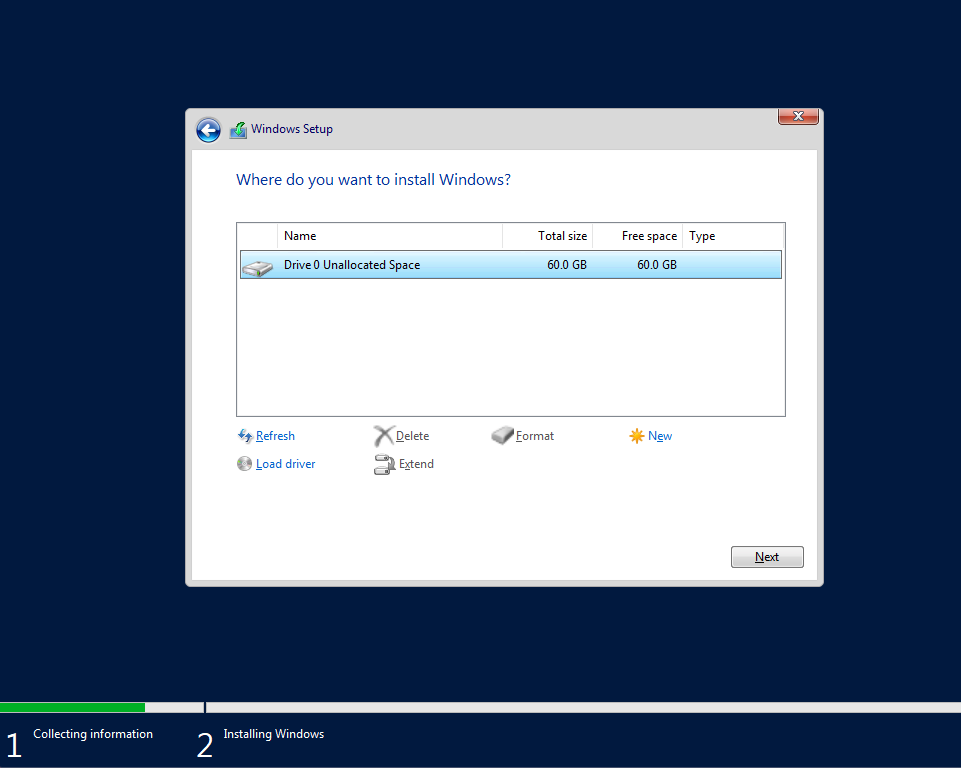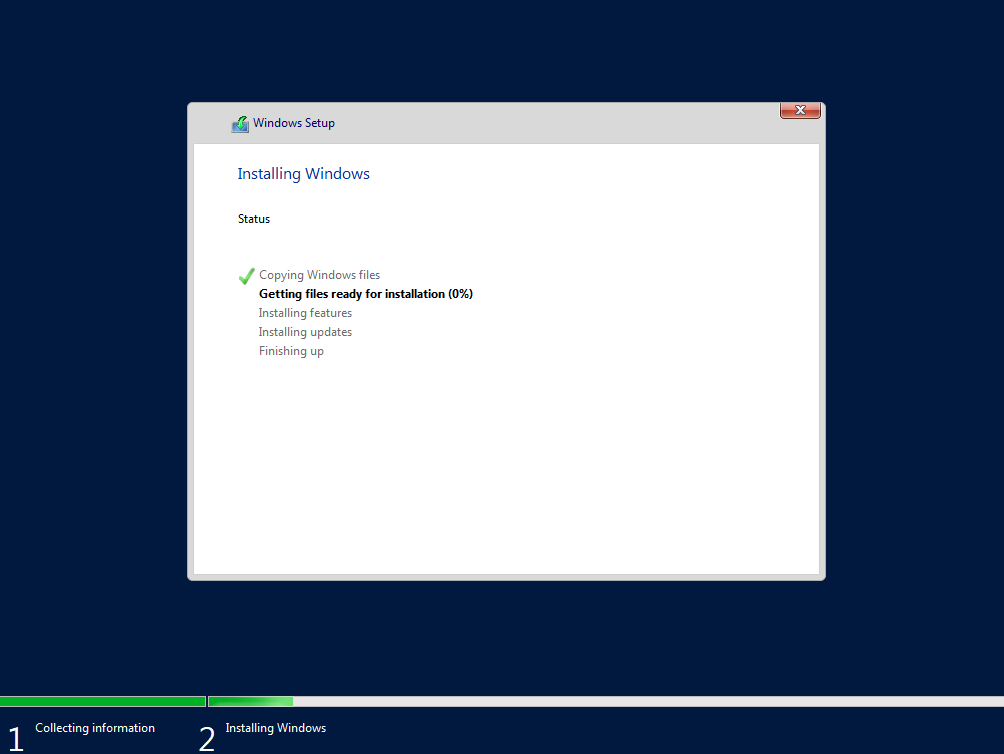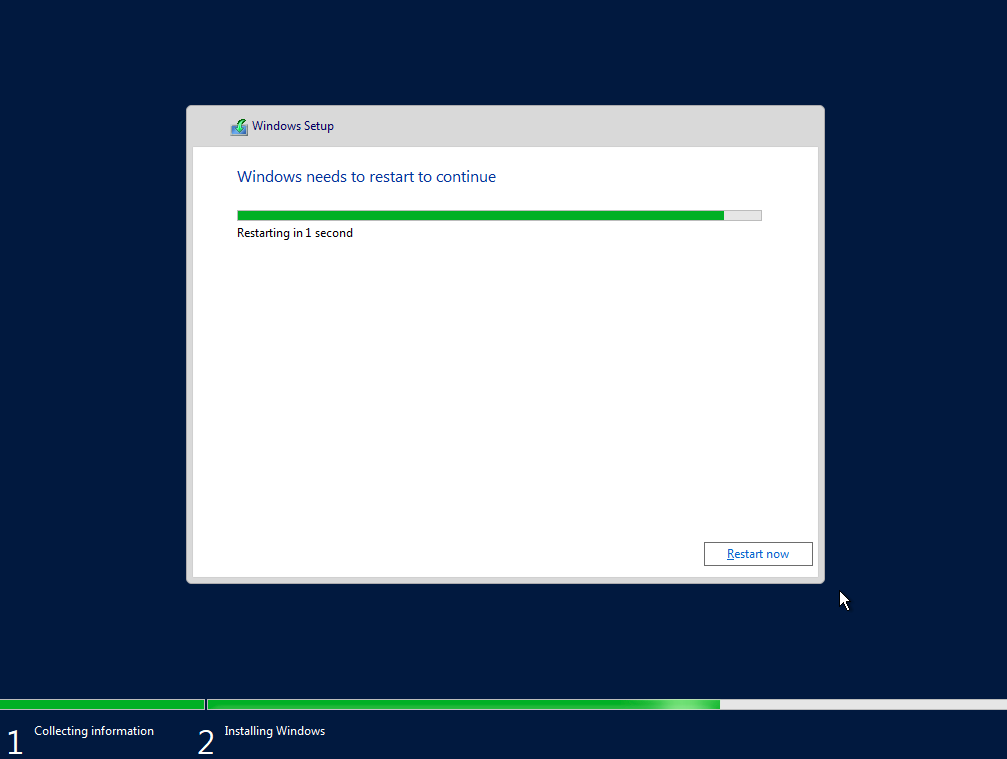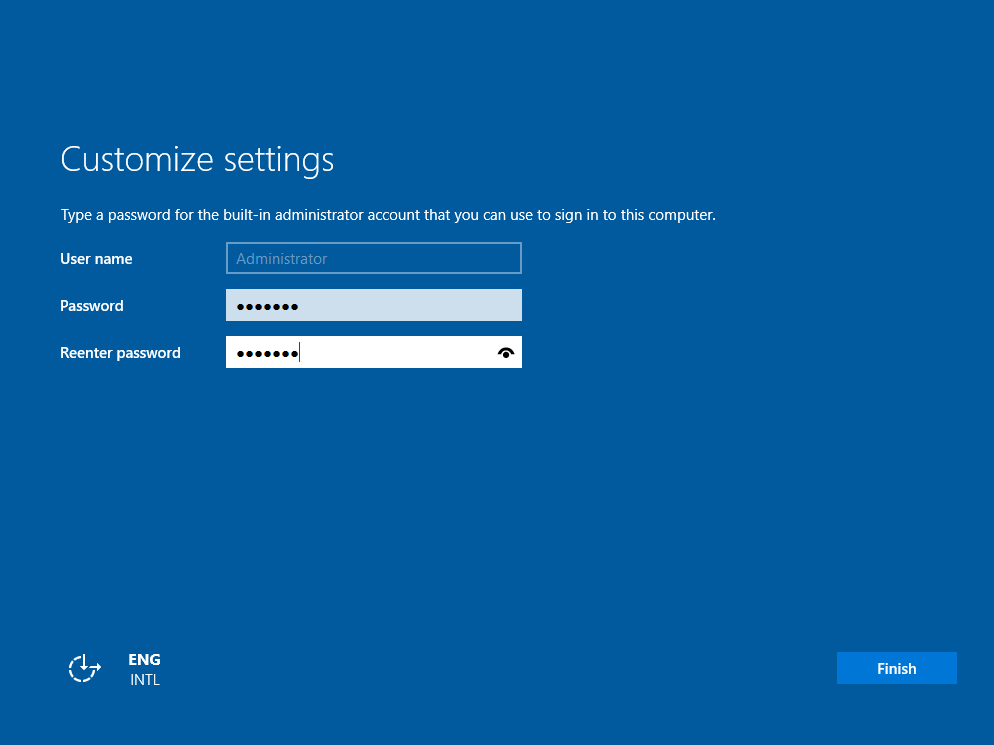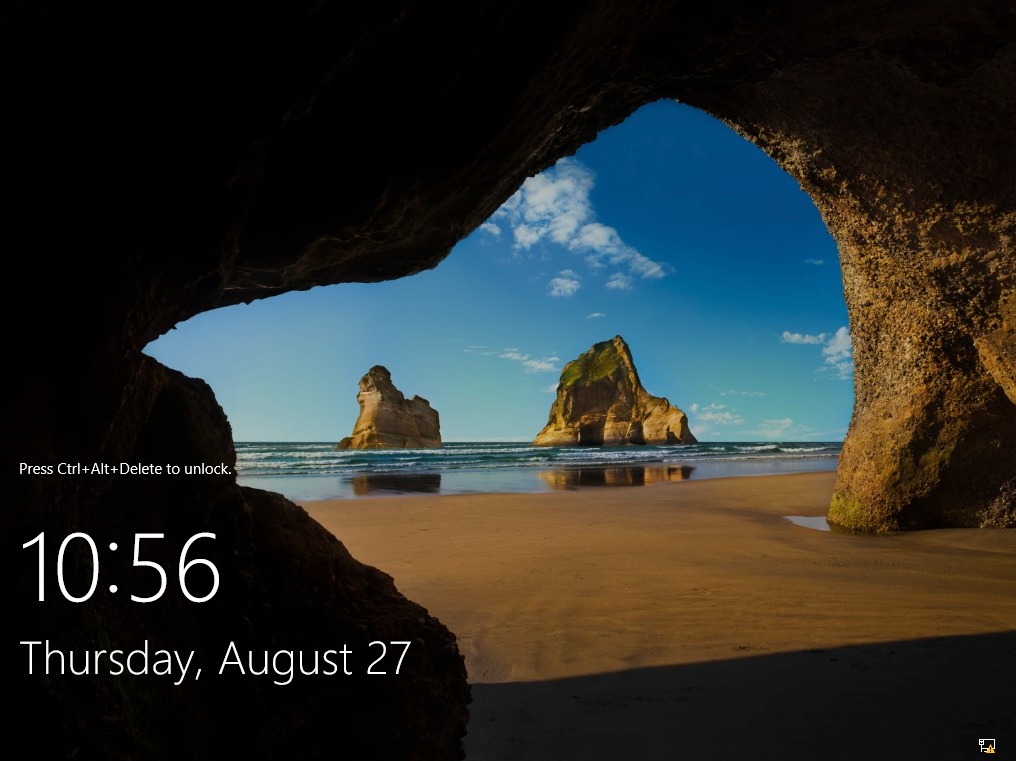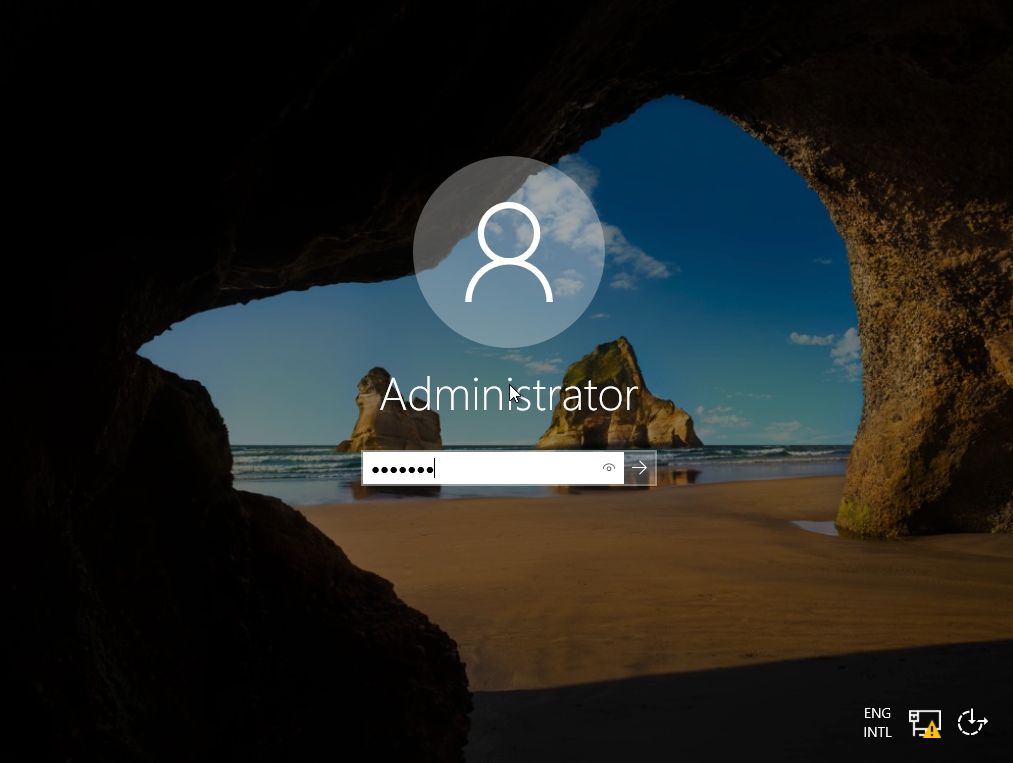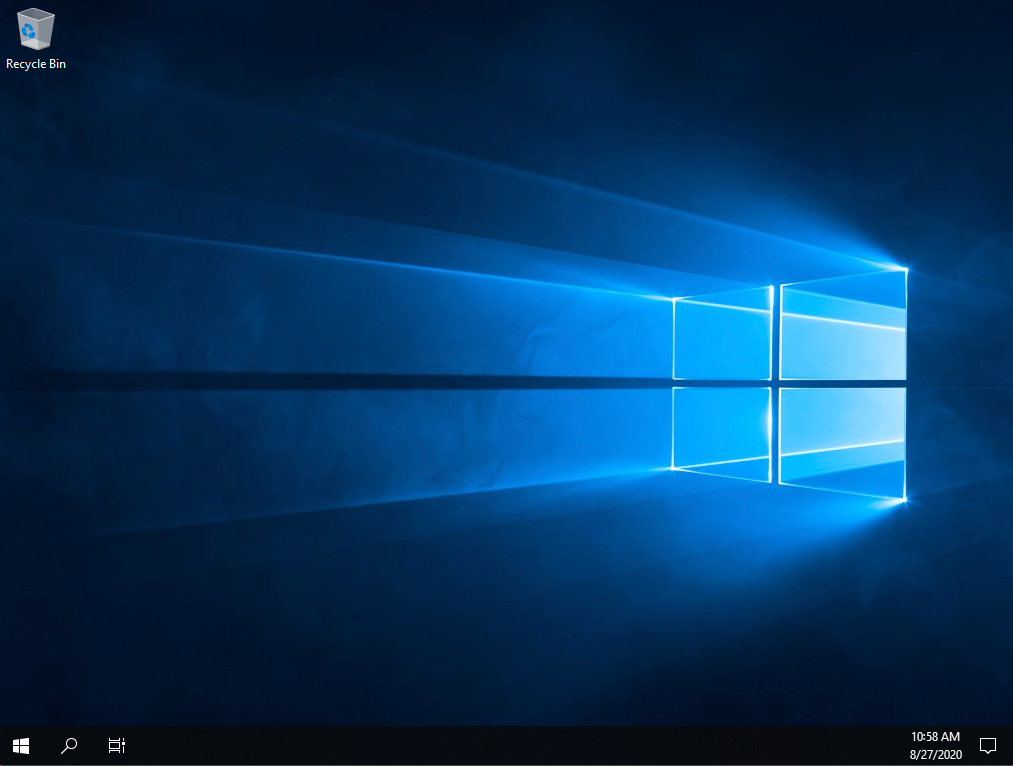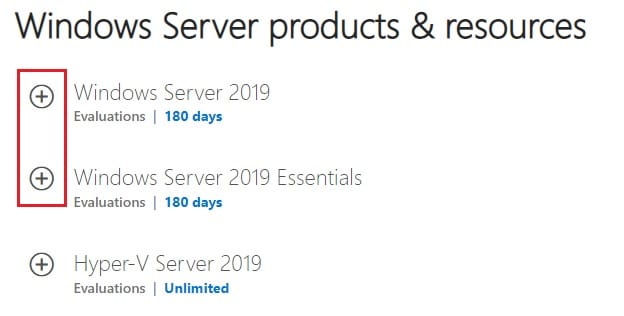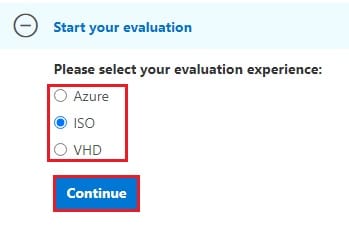Данная статья предназначена для тех, кто искал подробное и понятное руководство о том, как установить Windows Server 2019.
Настоятельно рекомендую никогда не использовать никаких сторонних сборок Windows. Используйте только оригинальные установочные образы. Это поможет вам избежать множества проблем и получить максимальное быстродействие и стабильность.
Рекомендую всегда использовать англоязычные издания Windows Server. Как показывает практика, оригинальные (английские) версии Windows работают стабильнее, к тому же вам будет проще общаться на одном языке с профессионалами в случае возникновения проблем или при желании обменяться опытом.
После успешной загрузки с установочной флешки или DVD-диска Windows Server 2019, первым делом необходимо выбрать языковые параметры.
В данном руководстве рассматривается установка Windows Server 2019 на английском языке.
Нажимаем на кнопку “Next”.
Нажимаем на кнопку “Install now”.
Обратите внимание, если вам необходимо установить Windows Server 2019 в режиме Server Core (без GUI), то вам нужно выбрать “Windows Server 2019 Standard Evaluation” или “Windows Server 2019 Datacenter Evaluation”.
В данном примере рассматривается установка Windows Server 2019 Datacenter Evaluation (Desktop Experience).
Выбираем “Windows Server 2019 Datacenter Evaluation (Desktop Experience)” и нажимаем “Next”.
Теперь необходимо принять условия лицензии.
На этом шаге предлагается два варианта установки:
-
“Upgrade”. Это не самый лучший вариант. Как показывает практика, многочисленные программы могут быть не совместимы с новой операционной системой, и после обновления вы не сможете с ними работать, кроме того есть вероятность перетащить проблемы со старой операционной системы в новую, таким, образом потеряв всякую стабильность.
-
“Custom”. Это лучший вариант для установки любой версии операционной системы Windows. Он позволяет начать работу с системой “с чистого листа”, таким образом, после установки вы получите максимальное быстродействие и стабильность. Останется только установить драйвера и привычное для работы программное обеспечение.
Теперь необходимо выбрать на какой диск будет установлена новая операционная система и выделить место для установки.
В случае если у вас установлено более одного диска или на диске уже имеется несколько разделов, все это будет отображаться на данном этапе. Необходимо соблюдать осторожность и заранее понимать, на какой раздел вы хотите установить операционную систему.
В данном примере установлен один диск объемом 50 GB.
Нажимаем на кнопку “New”.
В данном случае под систему будет выделено все свободное место на диске, поэтому оставляем значение в разделе “Size” по умолчанию.
Нажимаем на кнопку “Apply”.
Операционная система уведомляет о том, что ей может понадобиться создать дополнительные разделы на диске для хранения системных файлов.
Нажимаем на кнопку “OK”.
Таким образом, под операционную систему было выделено все свободное место на диске, но в то же время система зарезервировала для себя небольшой раздел.
Теперь необходимо выбрать раздел, на который предполагается установить операционную систему, и нажать на кнопку “Next”.
Начался процесс установки операционной системы.
Компьютер автоматически перезагрузится.
Теперь нужно указать надежный пароль для учетной записи “Administrator”.
Нажимаем на кнопку “Finish”.
После завершения настроек, вас встретит экран блокировки Windows Server 2019.
Нажимаем “Ctrl+Alt+Delete”.
Далее необходимо войти в систему под учетной записью “Administrator”.
Далее будет возможность включить сетевое обнаружение, чтобы сервер был виден другим компьютерам в сети.
Обратите внимание, сетевое обнаружение не рекомендуется включать в публичных сетях.
Нажимаем на кнопку “Yes”.
Установка Windows Server 2019 завершена.
Join us to say hello to the 9th version of the Windows Server operating system, which Microsoft announced on March 2018. This article will review a visual installation process of Microsoft Windows Server 2019. From the workgroup to the data center, an infrastructure of interconnected applications, networks, and web services may be built with Windows Server. It connects on-premises systems with Azure, giving extra security levels and assisting you in modernizing your infrastructure and applications.
The next version of Microsoft’s server operating system, Windows Server 2019, adds a number of new features along with upgrades and performance enhancements. Built on the solid basis of Windows Server 2016, Windows Server 2019 introduces several advancements in security, application platform, hybrid cloud, and hyper-converged infrastructure (HCI).
The Desktop Experience is a part of Windows Server 2019, a Long-Term Servicing Channel (LTSC) release. Like Windows Server 2016, you can install Server Core or Server with Desktop Experience while configuring the operating system. To reduce the operational expenses associated with reactively managing issues in your Windows Server deployments, you can use the new feature of Windows Server 2019 which is System Insights.
Following this guide, you can install Windows Server 2019 on a physical server, Virtual Environment, or the Cloud. If you prefer installing Windows Server 2019 on a physical server, you must first pull the Windows Server ISO image and burn it to a USB device. Users of VirtualBox, KVM, and VMware need only attach the ISO file during VM creation and carry out the specified installation procedures.
Prerequisites to Install Microsoft Windows Server 2019
To let this tutorial works correctly, provide the options below and move on.
- Server: Buy Dedicated Server to install Windows Server on it, and then follow the below instructions and screenshots to install Windows Server 2019 on the computer you prefer to be your server machine.
- Processor: 1.4 GHz 64-bit processor
- RAM: 512 MB
- Disk Space – At least 32 GB
- Network: Gigabit (10/100/1000baseT) Ethernet adapter
- Optical Storage: DVD drive (if installing the OS from DVD media)
Let’s go through the steps of this guide and learn How to Install Windows Server 2019 smoothly. Just prepare a clean USB to create a bootable USB or DVD medium. Connect the USB to your system and start it.
Step 1. Select Language, Keyboard type, and Time Zone
When loading files is finished, you will see the first blue screen. Select your preferred language, Keyboard layout, and Time zone. Then, click ‘’Next’’.
Step 2. Install Windows Server 2019
On the below screen, click on ”Install Now” to let the installation process get started.
When you see the ”Setup is starting” screen, wait till it ends.
Step 3. Choose the Windows Operating System
At this point in the installation process, select the Windows Server operating system you wish to install and click ‘’Next’’.
Step 4. License Agreement
By selecting the “I accept the license terms” checkbox after reading the license terms, you can begin the installation.
Step 5. Determine Installation Type
When you are asked to choose the type of installation, you must select (Custom: Install Windows only) if this is the first installation of Windows Server 2019 on your Server.
Step 6. Specify where to Install Windows Server 2019
In this part of Installing Windows Server 2019, you need to choose a partition to install Windows Server. Create a new partition for it and specify the size. Also, you can use the entire disk space available by clicking ‘’Next’’.
To consider a separate partition, If the service is going to be used as a full server, it is a good idea to keep the operating system separate from using data. To do this click ‘’New’’ and specify your considered size and click on ‘’Apply’’ and then click ‘’Ok’’.
Step 7. Complete the Installation
Wait for the installation to complete itself.
Windows will restart a couple of times and after that, the installation is finished.
Step 8. Specify a Password for the built-in Administrator Account
On the screen below, choose a complex password for the administrator when you are prompted and click ”Finish”.
Step 9. Enter Your Administrator Password
To enter the user profile service, enter your password and wait for applying user settings and the local session manager. Use the Ctrl + Alt + Del key combination to log in as the Administrator user.
Step 10. Windows Server 2019 Settings
To review Windows Server details, refer to the settings section and customize different fields if you wish.
You should also be able to find information about Windows Server 2019 installation in the Server Manager Local Server area.
That’s all. Congratulation. This is the end of installing Windows Server 2019 on your Physical server or Virtual Environment. In the end, you are recommended to get back up in Windows Server 2019.
A Quick Method to Install Microsoft Windows Server 2019
As you know, a Dedicated server is a requirement for installing Windows Server. Since the support team of your provider does not install Windows Server 2019, you need to use virtual machines such as esxi or kvm. if you use any virtualization software, take a snapshot of the final point, as you haven’t yet set any roles or functions (Directory or Certificate Services) for the server.
Installing Windows Server on a PC also requires a virtual machine which seems difficult for many users. So, what is the OperaVPS team’s suggestion? You can easily buy Windows VPS with a pre-installed Windows Server 2019 to not have to do all the required steps of installation and manage the long process of installation.
FAQ
There are four editions available:
Windows Server 2019 Datacenter
Windows Server 2019 Standard
Windows Server 2019 Essentials
Microsoft Hyper-V Server 2019
Microsoft has solved this issue.
Microsoft has released an emergency out-of-band update to address this issue.
Conclusion
In this article, you learned How to Install Microsoft Windows Server 2019. From now on, you will be able to create cloud-native and modernize traditional apps using containers and micro-services using Windows Server 2019.
If you follow the above steps properly then you can smoothly install Windows Server 2019 without any errors but do not hesitate to contact us if you encounter any problems. Our technical support team will try their best to solve your problems.
Why start this series in the 2020, when everything is about cloud, and Microsoft is pulling the plug on its “on-premise” certificates including MCSA, MCSE on Windows Server on 31.01.2021. Why even bother?
For a start… This series is obviously aimed at those of you who are just starting in IT, and want to pursue a career in IT infrastructure/services.
Although everything today is about cloud, Windows Server is still everywhere and will be for some time, since not every workload is suited for cloud, be it practical, security or regulatory reasons. That may change in future, but for now it is like that…
Also, I think that mastering Windows Server 2019 will help you understand basic concepts of services and IT infrastructure.
And in the end, Microsoft Azure is built on Windows Server 2019 at the moment, so if you have a chance to work on ASDK (Azure Stack) you will benefit from this knowledge, because you will understand how it is all connected and working.
This “Server Basics” series will not go into details too deep, the goal is to make you act and try technology by doing something practical and simple that works. That way you will quickly get the result which will make you excited about technology and push you to explore more.
Before you start…
Where to get the Windows Server 2019 installation?
No need for piracy, Microsoft offers trial version of software that will work for 180 days (and more) and is fully functioning.
You can get the software here – https://www.microsoft.com/en-us/evalcenter/evaluate-windows-server-2019
Select ISO image and click on Continue
You will be asked for your details, and after you enter everything select Continue
You will then select the language and click on Download…
If you are planing to do Windows Server 2019 installation on physical machine you will have to “burn” ISO image you downloaded to CD or USB stick (USB preferably) – you can do that with a tool called Rufus, you can find it here – https://rufus.ie/
Installation on Hardware or Virtual Machine?
Hardware
If you are installing on a physical machine (bare metal) there are a couple of thing to be aware of:
Minimal requirements are (same goes for virtual machines (VMs)) – 1.4Ghz 64bit CPU (it is very important you have 64bit capable CPU, otherwise this won’t work), 512MB of RAM – 2GB of RAM is minimal for graphic environment (which we will do) and 4GB is optimal in my experience. 32GB of disk space, 1Gbit ethernet, 1024×768 screen resolution, keyboard/mouse.
My advice would be to have CPU with multiple cores (2 or more if you can afford), at least 16GB of RAM (the more the better) 1TB disk drive at minimum for testing, if you plan to do LAB and test Windows Server 2019 and its services.
If you are installing on a server, be sure that you first upgraded all the firmwares on your machine. Also, create RAID field on the server on which you will place your Windows Server 2019 installation.
Make sure you set boot device in BIOS to USB stick (or whatever you burned your Windows Server 2019 installation to)
In the end have storage drivers (raid controller) or motherboard storage drivers at hand – Windows Server recognises a huge variety of storage controllers but you never know… Better to be prepared then to waste time. If you are practicing on Dell, HP, Lenovo server equipment, you are covered out of the box.
If you don’t have a server at hand and you are practicing in home lab on “desktop” grade hardware, no worries, installation should work, just make sure you have minimal requirements covered in your PC or laptop. There may be an odd driver issue to resolve if you have “exotic” configuration, so be aware of that.
Virtualization:
With virtual machines you just need to mount Windows Server 2019 ISO image we downloaded earlier after you created empty VM for your Windows Server 2019 ISO install. Procedure depends on the virtualisation software you are using, I can show you VMware vSphere, but more or less all the virtualisation softwares are same with these options, it just depends how you navigate to the option you need.
In vSphere you click on settings on virtual machine you created, it is a little wrench on the top of the screen. Under Removable Devices section you will select CD/DVD (SATA)
Click on the selection box and select “Choose a disc or disc image…”
Navigate to the location you downloaded your Windows Server 2019 ISO image and select it.
Now that we selected our ISO image, make sure you selected “Connect CD/DVD Drive” checkbox and then back to the main settings screen.
We need to set one more thing so we are sure that we will boot from our ISO image
Under Other Section select “Startup Disk”
Select CD/DVD as your startup device.
Again, settings in your virtualisation software may differ from this, so explore or Google for the steps you need.
Goal is clear whatever method – hardware or software you are using – mount Windows Server 2019 image we downloaded earlier and select it as bootable device. Also change hardware settings (CPU, RAM, disk) to the settings I mentioned above.
Installation
Now, to the final step, installation of our first Windows Server 2019 machine.
If you are doing it on physical machine be sure you set the USB stick (or CD/DVD if you burned downloaded ISO image to it) as main bootable device in BIOS (probably under boot menu) and in your virtualisation software follow steps I mentioned earlier.
If you did everything correctly, you will be greeted with this screen…
“Press any key to boot from CD or DVD” – press a key on your keyboard to boot from it…
Wait…
Language to install: Select language you wish your Windows Server installation to be – I will select English
Time and currency format – again, select your local settings
Keyboard or input method – select a keyboard layout, I will select English keyboard layout.
Install now…
…
We will select Windows Server 2019 Datacenter Evaluation (Desktop Experience)
Read agreement, select “I accept…” and click on Next
Select “Custom: Install Windows only (advanced) option
Now, select the disk you prepared for this installation. If this is a blank screen for you, you will need to prepare and load drivers for your storage controller (or RAID controller) I mentioned before. Copy drivers (drivers need to be for the Windows Server 2016/19 or some Windows 10 will even work) to USB, plug it in your machine and click on the Load driver on bottom of the screen. Then browse to your driver, select it and hope for the best.
Also, make sure disk you are installing on is empty with no important data on it, this operation will delete everything on it.
If you can see your disk on the screen below, then select Next and the installation will start…
We will now wait a bit… Waiting depends primarily on the speed of your PC, it may take longer on be very quick to install…
After you reached last step you will get restart screen…
Let the computer/VM restart and this time let it pass “Press any key to boot from CD or DVD” – do not press any key on that screen.
You will be greeted with this screen… Enter password of your selection for your installation. Always make sure you use strong passwords (Minimum 12 signs – combination of letters, numbers, special chars…)
Click on Finish
That is it, you are greeted with lock screen
Press CTRL+ALT+DEL if you did install on physical machine, if you done install on a VM, look for a CTRL+ALT+DEL shortcut in a menu.
Enter your password and press enter on a keyboard.
Congratulations, you did your first Windows Server 2019 installation.
In the future I will try to expand this “Server Basics” series with more tutorials on how to configure your Windows Server 2019 installation and set various services on it (DHCP, DNS, file share, failover…)
I have a very busy schedule, so I can’t promise much, but I will try to write as much as time allows.
If you are interested in a video version of this tutorial – here is the video:
Disclaimer
Other tutorials in this series:
Server basics 02: First steps adter Windows Server 2019 install
Server Basics 03: How to install Hyper-V
Server Basics 04: How to create VM on Hyper-V
Server Basics 05: How to create virtual machine template
Server Basics 06: How to create windows domain
Server Basics 07: How to create user in domain, join computer to domain
Server Basics 08: How to create DHCP server
Server Basics 09: How to configure Groupe Policy Part1
Server Basics 10: How to configure Groupe Policy Part2
Server Basics 11: How to create iSCSI Target in Windows Server
Server Basics 12: How to create file server (DFS) in Windows Server
Server Basics 13: How to create Print Server
Installing Windows Server 2019 is pivotal in setting up reliable server infrastructure that can handle many of your organizational needs. Whether you’re running a small business network, managing a data center, or hosting websites and applications, Windows Server 2019 provides a top features platform to meet your development or work needs.
Windows Server 2019 offers a plethora of enhancements over its predecessors, including improved security features, enhanced virtualization capabilities, and better performance. It’s designed to be a stable and scalable foundation for your network infrastructure, to ensure your systems run smoothly and securely.
At the end of this guide, you will have a better understanding of the process to install Windows Server 2019, ensuring that you have a clear and accessible roadmap to deploy this powerful operating system on your hardware successfully. Don’t forget to also choose the best cloud server hosting setup for your deployment.
Whether you are a top dev professional, working freelance, a 9-5 job, or a beginner trying to work your dedicated Windows server journey, this tutorial will demystify the installation process of windows server deployments, enabling you to harness the potential of Windows Server 2019 for your business or personal needs. So, let’s look into the intricacies of installing Windows Server 2019 and give you the opportunity to work on this crucial aspect of server management.
Prerequisites to Install Microsoft Windows Server 2019
The Windows Server 2019 requirements are very similar to Windows 10 system requirements.
- Processor – 1.4 GHz 64-bit processor
- RAM – 512 MB
- Disk Space – 32 GB
- Network – Gigabit (10/100/1000 based) Ethernet adapter
- Optical Storage – DVD drive (if installing the operating system from DVD media)
- Video – Super VGA (1024 x 768) or higher -resolution
- Input Devices – Keyboard and mouse
- Internet – Broadband access
How to Install the Windows Server Operating System
Before we get started with the installation, you will need a copy of Windows Server 2019 to enable you to work on your installation. To do this, visit the Microsoft Website and navigate to the Windows Server Evaluations.
Here, you can download various versions of the evaluation product, including Windows Server 2019, that you can use for free for 180 days. You can evaluate using the Azure, ISO, and VHD. You can install your Windows Server 2019 on a virtual machine like Hyper-V. Let’s get started.
Windows Server 2019 Installation Steps
Step 1: Create a boot mode
We need to boot from the installation media like the ISO file downloaded. Download a few virtual machines to see which one works for you. You can choose Hypervisor and boot the ISO on the virtual machine. This should lead you to a new screen. If you need to use hardware, choose an 8GB memory stick.
Step 2: Select Language, Keyboard type, and Time Zone
Now that you have a new screen up. Make sure you are on a screen that says Windows Setup. It should be a blue screen where you can choose your language, time, and currency format, and keyboard.
Step 3: Install Windows Server 2019
On the new screen, you want to click on Install Now to begin installation. Now, this could take a few minutes or seconds, depending on your RAM size.
Step 4: Choose the Windows Operating System
You need to choose the Windows operating system that works best for you at this stage, depending on our needs. We have four types:
- Windows Server 2019 Standard Evaluation
- Windows Server 2019 Standard Evaluation (Desktop Experience)
- Windows Server 2019 Data Center Evaluation
- Windows Server 2019 Data Center Evaluation (Desktop Experience)
The desktop experience version installs the full graphical interface version of the operating system, which is ideal for learning and evaluating Windows Server 2019. The option that does not include the Desktop Experience will install a server-core version of the OS, which doesn’t include a GUI, and it is managed using PowerShell or remotely with Windows Admin Center. Learn more about how to install PIP on Windows.
Step 5: Applicable Notices
Click Next, read through the licensing terms, check the box “I accept the license terms,” and click Next again.
Step 6: Determine Installation Type
Here, we have two choices, which are Upgrade and Custom. Now, the custom option will allow us to install a new and clean Windows Server 2019, while the Upgrade will help you upgrade the current operating system on your virtual machine. However, we are working with a brand new installation here, so you should choose the Custom option.
Step 7: Where to install Windows
At this point, you need to allocate disk space to install the Windows Server 2019 operating system. You can allocate a specified size to house the Windows OS or install it in the currently allocated disk space. However, it is a good idea to house the operating system in a separate partition. For instance, if your server will be a file server, keeping the operating system separate from your user data is best. To do this, click on NEW and specify the space that you need to allocate for your file storage. Make sure you leave at least 60GB available for the Windows Server operating system. Allocate and click APPLY.
Read more on how to install Plesk on a Windows Server.
Step 8: Ready to Install Windows
Make sure the primary partition is selected, and then click NEXT. Now you should get a screen that says ‘Installing Windows’ with steps like, ‘Copying Windows files’, ‘Getting files ready for installation’, ‘Installing features’, ‘Installing updates’, and ‘Finishing Setup’. Sit back, as this could take a couple of minutes, and restart about two to three times before installation is completed.
Step 9: Customize Settings and Enter Your Administrator Password
Your new screen should have a field to specify your admin password. Your password must meet Windows server complexity requirements. Type in your password and click Finish.
Step 10: Configuring the Server
At this point, the installation has been completed. It’s time to check for security vulnerabilities and to make sure things like Windows Deployment Services (WDS) Transport Server role were added to the Server Core, Windows Defender Advanced Threat Protection (ATP), and Windows Time Service.
Conclusion
We can wrap this up by confirming that our experience has been positive using Window Server 2019. Given that it’s an older OS, it is advisable that you install all the latest hotfixes and security updates directly from the Microsoft server update section of the software. You can also download them from the Microsoft website and then manually install them, if you prefer.
ServerMania recommends you install any security update from the update system security section of your new Microsoft Windows Server 2019. Visit ServerMania for any cloud hosting solutions you might be looking for, and if you would like advice on what server to deploy your software on, please don’t hesitate to get in touch with us for a free consultation.
It has been nearly 2 years since Microsoft released Windows Server 2019. After it was made available to Windows Insiders for Servers, it was made available to the public in October 2018.
Windows Server 2019 comes with support for hybrid capabilities to manage local and Azure resources, as well as other advanced features that make it superior to Windows Server 2016.
This article discusses the salient features of Windows Server 2019 and provides links from where they might download it.
Now you can download Windows Server 2022 ISO from Microsoft.
Table of contents
- System requirements
- Features in Windows Server 2019
- Hybrid adaptability with Azure
- Hyperconverged Infrastructure (HCI)
- Windows Admin Center (Project Honolulu)
- Security improvements
- Improved containers
- Download Windows Server 2019
- Closing words
- Related Questions
System requirements
You must have the following minimum resources on a device to be able to install and run Windows Server 2019:
- At least 1.4GHz 64-Bit processor.
- 2GB RAM (for GUI-based installation).
- A minimum of 32GB of free space on the hard drive.
- Network adapter(s) compliant with PCIe architecture.
More information about system requirements can be found here.
Features in Windows Server 2019
Microsoft introduced new features and characteristics to the new Server 2019 that are distinct from the previous versions, such as Server 2016, 2012 R2, etc. Here are a few highlighted features worth noticing.
Hybrid adaptability with Azure
Server 2019 is now compatible with both on-premise (Local) resources and cloud-based resources on Microsoft Azure. IT professionals can now use local and cloud features like Azure Backup, Disaster Recovery, Storage Migration Services, etc., all from a single Windows Server 2019 platform.
Hyperconverged Infrastructure (HCI)
Hyperconverged Infrastructure (HCI) is a software that combines all of the basic data center elements, such as compute, storage, networking, and management, into a single software. This facility aims to obtain all the functions of a miniature data center without the additional hardware costs.
Microsoft updates these features through the Semi-Annual Channel releases, which means 2 updates annually. In Windows Server 2019, Microsoft has incorporated all previous updates to build the latest HCI. This benefits the corporations relying on software-based datacenters by providing them with the accumulated datacenter features embedded in Windows Server 2019.
Windows Admin Center (Project Honolulu)
Prior to the release of Server 2019, Microsoft also released Windows Admin Center. The codename for it was Project Honolulu. Recently Microsoft released a stable version of the Admin Center.
The Windows Admin Center’s primary purpose is to manage both GUI and CLI-based devices running Server 2019, 2016, and 2012 R2 in its environment. The app is locally-deployed and is browser-based.
Security improvements
It would have been an incomplete server architecture without enhancing its security! Therefore, Microsoft has included Windows Defender Advanced Threat Protection (ATP) in Server 2019 that detects common behaviors of malware and zero-day exploits, blocks them automatically, and prompts the user of the danger.
Microsoft continues to include built-in malware detectors to aid users to secure their environment, adding an extra layer of security protocols.
Improved containers
Developers can now ease their minds as Windows Server 2019 has improved their container architecture significantly. They are now made smaller and more efficient than before, reducing the overhead costs and footprint. A smaller application package automatically reduces costs and vacates resources for other projects.
Download Windows Server 2019
You can download the different Server 2019 versions using the links below:
If you have a valid license for Server 2019, you can download it from the Volume Licensing Service Center (VLSC).
If you do not have a license, you may download an evaluation copy using the link provided. Note that the evaluation copy expires and you may not be able to use it after 180 days unless you purchase a license. Here is the price list for Windows Server 2019 Datacenter, Standard, and Essentials. You may also obtain a Server 2019 license by subscribing to Visual Studio or through the Microsoft Partner Network.
Follow the guide below to download Windows Server 2019 ISO, VHD or Azure version:
- Go to Microsoft Evaluation Center and expand the edition of Server 2019 you want to download.
- Then select the type of download you wish to make (Azure, ISO, or VHD) under Start your evaluation and then click Continue.
- You will now be presented with a form. Fill it out and then click Continue.
- Now select the language you wish to download it in from the drop-down menu and then click Download. You may download Server 2019 in the following languages:
- Chinese
- English
- French
- German
- Italian
- Japanese
- Russian
- Spanish
Your download will now begin with the preferences you have chosen. If you have downloaded an ISO image, you can use Ventoy to deploy it or install it directly from the hard drive.
Closing words
If your organization is already using a Windows Server environment, then you might want to consider moving to the latest version, which is Windows Server 2019. It provides a more secure infrastructure with added features like hybrid capabilities and unprecedented HCI. With Server 2019, you no longer need to expand your on-premise data center, only concatenate your Azure cloud services to the existing infrastructure.
Can I get Windows Server 2019 for free?
Yes, Microsoft offers a 180-day trial of Windows Server 2019. After the trial, you will need to buy a license.
What editions of Windows Server 2019 are available?
There are three main editions of Windows Server 2019: Essentials, Standard and Datacenter. All three editions are geared towards organizations of different sizes. For example, Windows Server 2019 Essentials is designed for an organization with 25 users and/or 50 devices in total. Windows Server 2019 Standard is suitable for small and medium organizations which don’t have a lot of virtualization and storage needs. Windows Server 2019 Datacenter is suitable for enterprises which need virtualization, storage and replication, software based networking and storage and other advanced features.
There is a bare-bones edition of Windows Server 2019 only for Hyper-V. It is free to use but it doesn’t come with a graphical user interface. You will need to use command-line to configure its settings.
How long will Windows Server 2019 be supported by Microsoft?
Windows Server 2019 follows a fixed lifecycle policy which means a minimum of five years of mainstream support from the date of launch and some additional time period for extended support for some products. Windows Server 2019 was released on 13th-November-2018. The mainstream support will be until 9th-January-2024 and an extended support until 9th-January-2029.
How many virtual machines can be installed on Windows Server 2019 Hyper-V?
You can run two virtual machines on Windows Server 2019 Standard edition and an unlimited no. of VMs in the Datacenter edition.
How do I check which edition of Windows Server 2019 is installed?
Open PowerShell and run the following command:
DISM /Online /Get-CurrentEdition
How to upgrade from Windows Server 2019 evaluation to full version?
Once the 180-day trial is over, you will need to upgrade your server software with a product key. To upgrade, open PowerShell and run the following command:
DISM /Online /Set-Edition:ServerStandard /ProductKey:ABC12-DEF34-GHI56-JKL78-MNO90 /AcceptEula
Once the process is complete, you will need to restart the server for the changes to take effect.
